Strength After 60: Simple Routines to Prevent Muscle Loss
You don’t need fancy gym memberships or a bodybuilder’s routine—just a dash of consistency, a spirit of self-care, and exercises designed for exactly where you are today. This expanded list of strength routines is crafted specifically for older adults, blending medical research, trainer insights, and plenty of encouraging modifications. Whether you’re a lifelong exerciser or just beginning, these next steps are about celebrating progress, protecting your independence, and discovering how strong you can truly feel—one minute, and one simple move, at a time.
1. The Power of Compound Movements: Why Multi-Joint Exercises Matter
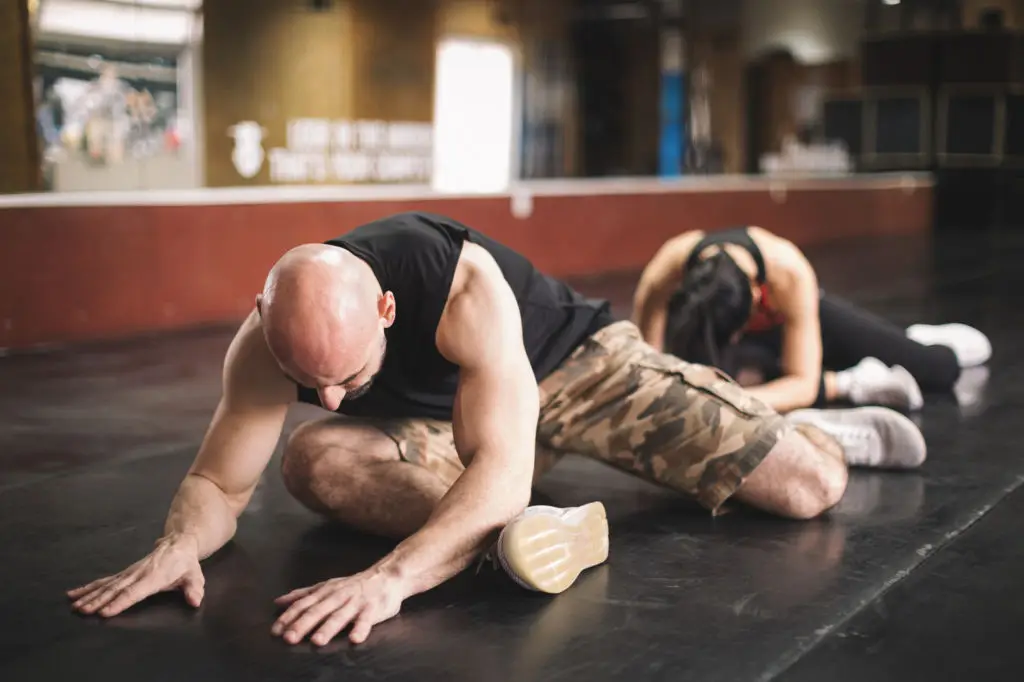
Imagine exercises that train your entire body in one smooth motion. That’s the beauty of compound movements—simple actions like squats or rows that engage several muscle groups at once. These moves help you build functional strength, supporting the same actions you use to rise from a chair or carry groceries. Scientific research shows compound exercises can boost energy, improve balance, and lower risks for common diseases in older adults. Not only do they help maintain muscle, but they make everyday life easier. Personal trainers recommend making these moves the foundation of any 10-minute routine, since they maximize results in minimal time. If you’re short on energy or new to strength training, start slowly, focusing on good form and steady breathing. As you become more familiar, you’ll notice these movements getting easier—and daily activities feeling lighter, too. Every rep is a step toward reclaiming (and protecting) your strength.
2. Safety Starts Here: Warm-Up and Medical Precautions

Safety isn’t an afterthought; it’s the heart of every healthy routine. Begin each session with a gentle warm-up, such as marching in place, slow arm circles, or ankle rolls for about two minutes. This increases blood flow and prepares your muscles to move smoothly. If you have a heart condition, recent surgery, or pain that lingers, speak with your healthcare provider before making changes to your activity. Listen to your body throughout—slight effort is normal, but sharp pain or dizziness is a sign to pause. Don’t rush: starting slowly and building up protects joints and reduces fall risk. Need a little extra stability? Use a sturdy chair or wall for initial support. With these simple steps, you’re setting the stage for not just strength, but confidence and comfort—a foundation that lets every move count just a bit more.
3. Chair-Assisted Squats: Building Leg and Core Strength
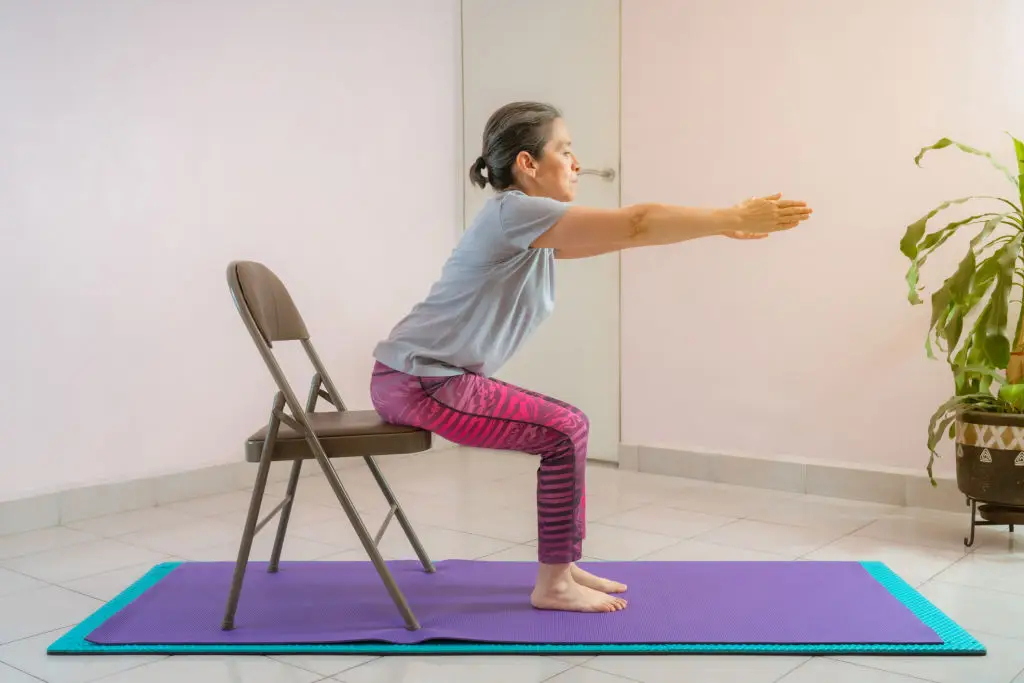
Squats are small wonders for your whole lower body, and starting with a chair makes them safe and approachable. Stand in front of a sturdy chair, feet shoulder-width apart. Slowly bend your knees and hips to lower yourself down, as though sitting, then press through your heels to rise again. Keep your chest high, and don’t let your knees move past your toes. If balance feels tricky, use the chair’s back for support or only lower halfway. This move doesn’t just train legs—it also wakes up your core, building strength for rising from a seat, using the restroom, or tidying around the house. As the motion grows easier, try hovering just above the chair before standing or add light hand weights for a new challenge. Every successful squat is a celebration of renewed independence.
4. Standing Overhead Press: Reach Higher, Feel Stronger
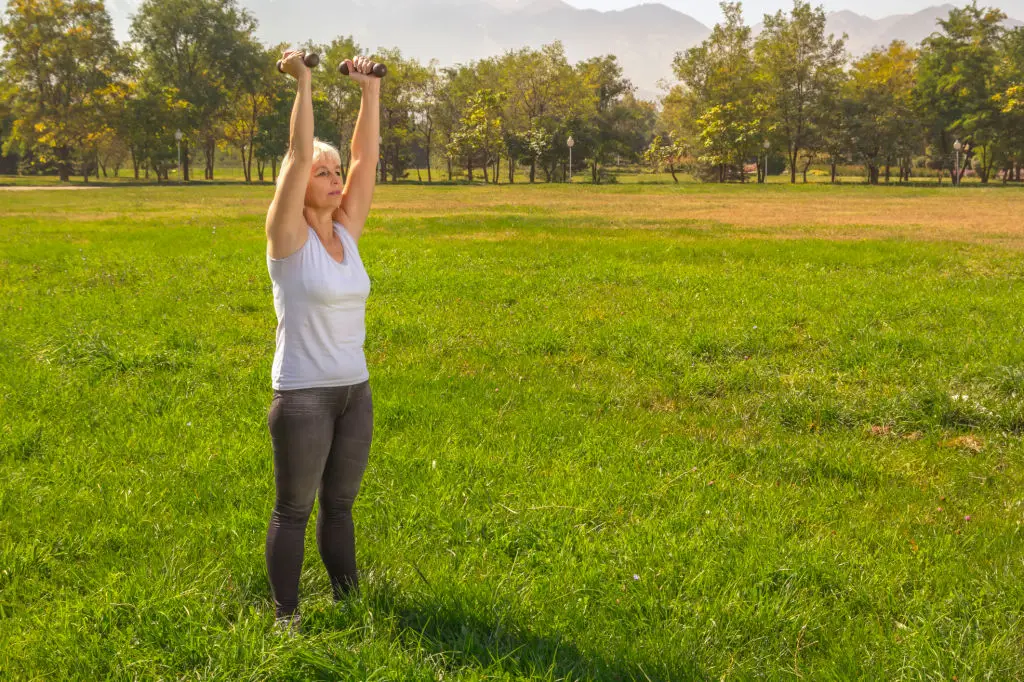
Building confident shoulders isn’t only about looks—it helps you reach for shelves, unload groceries, and even hug grandkids. The standing overhead press is a straightforward move that strengthens your arms and shoulders together. Start with light dumbbells or any household objects (like water bottles) in hand, elbows bent at shoulder height. Gently press upward until your arms nearly straighten, then lower back down slowly. Try this move seated if you’d like more support. Remember, smooth and steady is better than fast—focus on control rather than heavy weights. If you experience discomfort in your shoulders, try reducing weight or pressing to a comfortable range instead of fully overhead. Over time, even small gains add up, and you may notice everyday reaching and lifting feeling far more effortless.
5. Wall Push-Ups: Upper Body Strength Without Floor Work
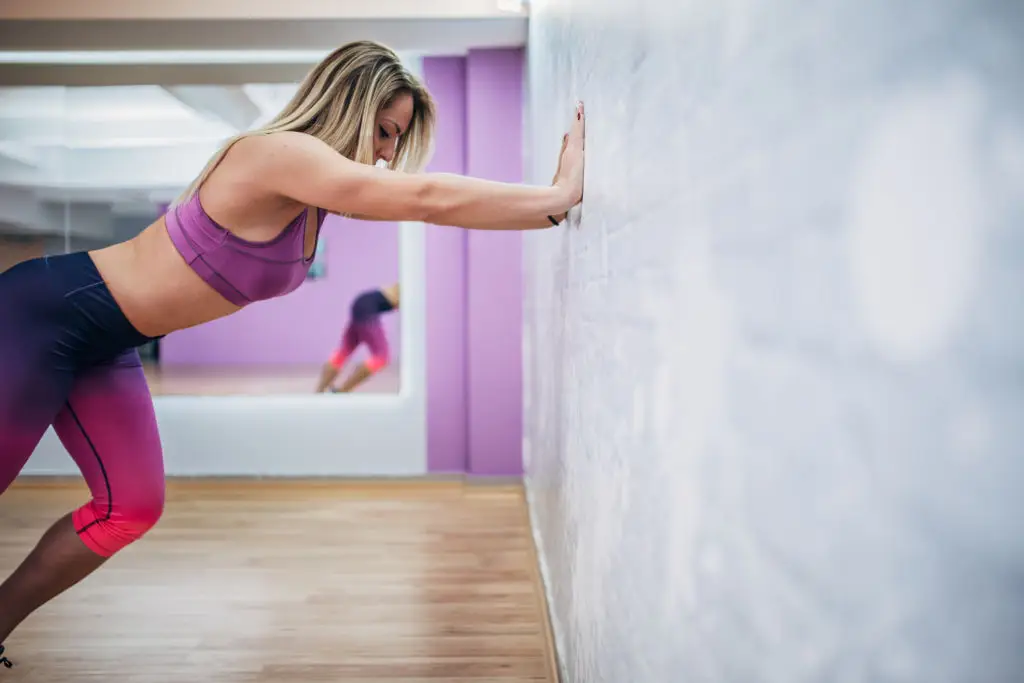
Push-ups don’t have to mean getting down on the floor. Wall push-ups build chest, shoulder, and arm strength from a comfortable, upright position. Stand facing a wall, feet shoulder-width apart, and place your hands lightly against the surface at chest height. Step back so your body is on a slight diagonal, then bend your elbows to lower toward the wall. Press back to your starting spot—slow, steady, and always in control. If you’re just beginning, move closer to the wall for easier reps; as you get stronger, take a step farther away for a challenge. Tight shoulders? Keep your elbows at a forty-five-degree angle rather than flaring wide. Wall push-ups are practical and kind on the joints, making them a perfect fit for daily strengthening, one gentle push at a time.
6. Seated or Standing Bicep Curls: Everyday Lifting Made Easier

Lifting bags, pouring milk, or even gardening—all call on your arm strength. Bicep curls specifically target the muscles you use dozens of times each day. Sit or stand with your arms at your sides, holding light weights, cans, or even resistance bands. Keeping your elbows tucked against your body, bend your arms to lift your hands toward your shoulders, then gently lower. If gripping objects is difficult, loop a band around both hands for less strain. Choose a weight that lets you perform 12 to 15 repetitions comfortably. As you feel more confident, slow down each repetition to boost muscle engagement or do one arm at a time for a balance challenge. This exercise isn’t about bulk—it’s about restoring the strength that helps you manage daily life with a bit more ease.
7. Gentle Romanian Deadlifts: Train for Lifting and Stability
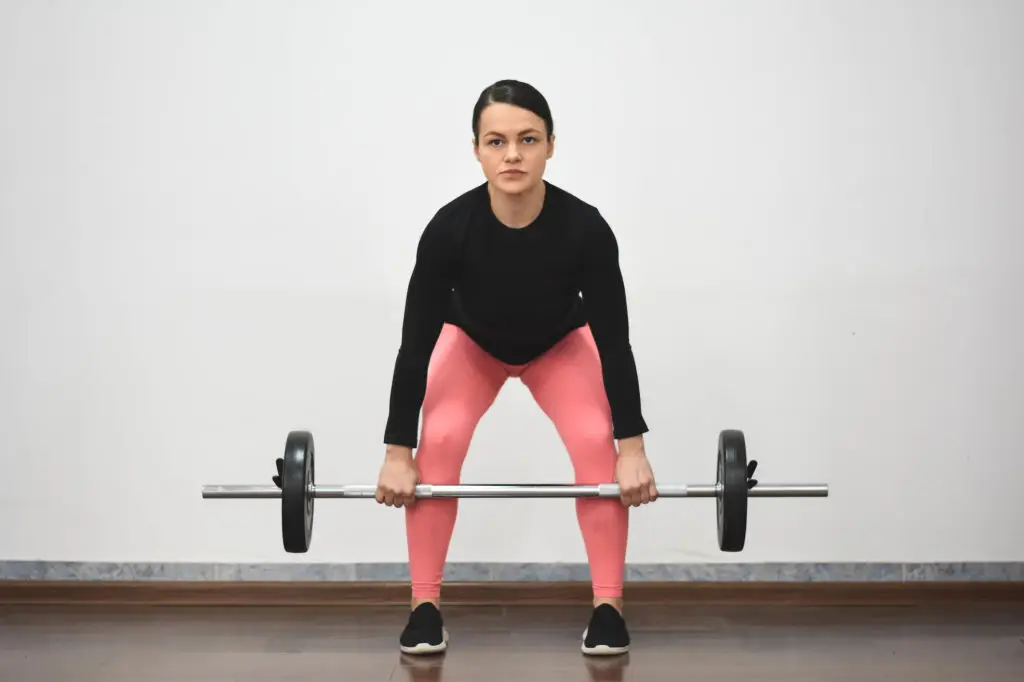
Every time you bend down to pick something up, you’re using the hip hinge movement. Romanian deadlifts are a safe, spine-friendly way to train the back of your legs and lower back. Start standing with feet hip-width apart, holding weights or simply placing your hands on your thighs. Slowly slide your hands or weights down along your thighs by pushing your hips back—not your knees forward—keeping a soft bend in your knees. Pause when you feel a gentle stretch in the backs of your thighs, then rise upright by squeezing your glutes. Use a chair or countertop for balance if needed. It’s not about reaching the floor, but feeling the motion and maintaining a long, strong back. This move helps make daily bending, cleaning, and even tying shoes smoother and safer.
8. Supported Side Leg Raises: Improve Balance and Hip Stability
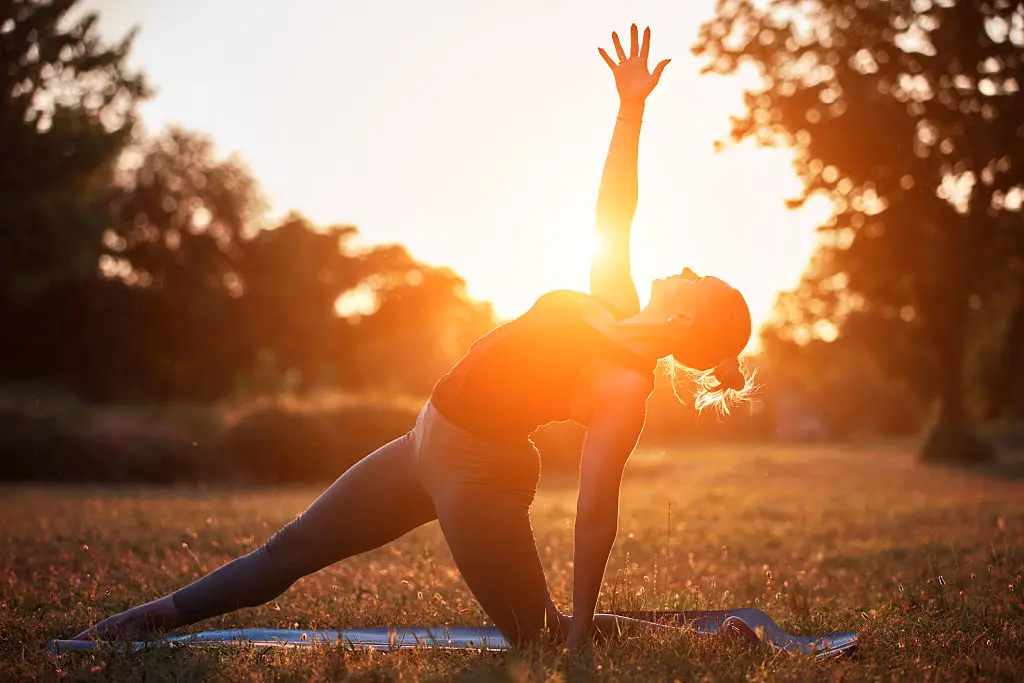
Balance isn’t just about avoiding falls; it’s feeling steady and capable during daily movements. Supported side leg raises strengthen hips, outer thighs, and your core’s stabilizer muscles—crucial for healthy walking and safe transfers. Stand tall beside a sturdy chair or countertop for support. Keeping your toe pointed forward, slowly lift one leg out to the side, pause briefly, and lower it back down with control. Don’t worry about how high you lift—focus on moving with confidence and without wobbles. Switch sides after several reps. As you progress, try briefly balancing without holding on or adding a gentle ankle weight for challenge. This small but mighty movement quietly builds the kind of strength that keeps you moving through each day with reassurance.
9. Standing Ab Crunch: Deep Core Activation You Can Do Anywhere
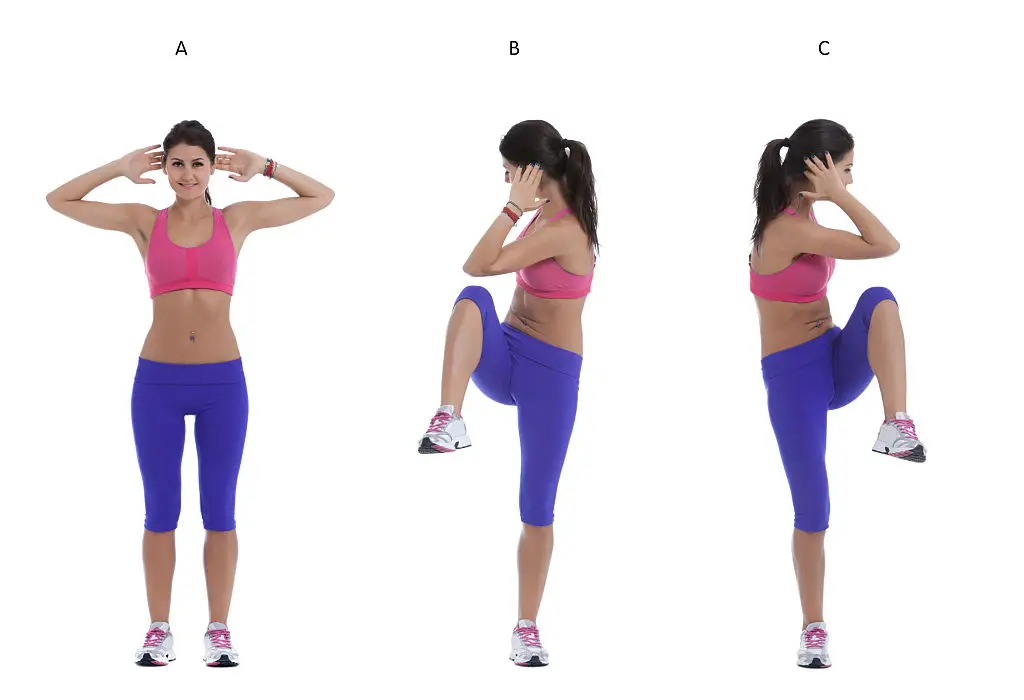
A strong core is about stability more than six-pack muscles. Standing ab crunches gently activate deep core muscles without the need to get on the floor. Stand tall with feet hip-width apart, hands lightly touching your temples. Bring one knee up as you gently rotate your torso, aiming your elbow toward your knee. Lower, switch sides, and repeat. Each movement should feel controlled, not rushed. If balance is tricky, stand near a wall or hold a countertop. Want extra resistance? Use light ankle or wrist weights. Over time, this move can improve balance, support your spine, and help with posture—setting you up for every other exercise, and for easier breathing, too.
10. Resistance Band Rows (or Towel Alternative): Posture and Back Health
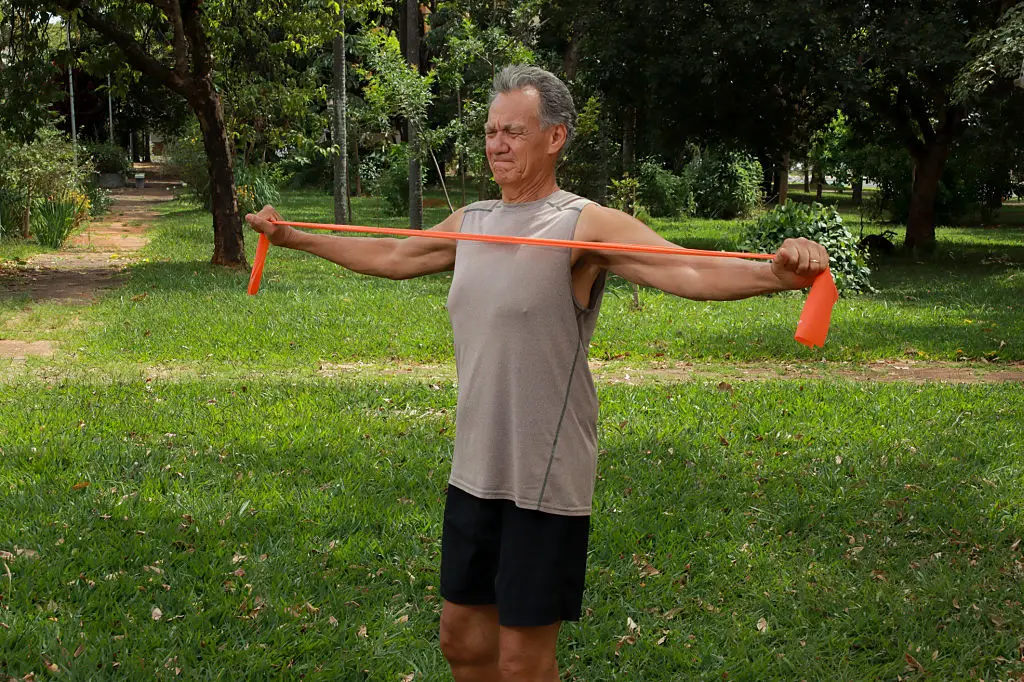
Good posture starts with a strong back, and rows are an easy way to get there—no gym required. Use a resistance band: secure the center under your feet, hold the ends, bend your knees slightly, and hinge forward a little at your hips. Pull both ends back, keeping elbows close, and squeeze your shoulder blades together. If you don’t have a band, a towel held taut between both hands works in a pinch—focus on “pulling apart” as you mimic the motion. Always keep your back long and neck relaxed. Start with slow, small reps and increase the number as you grow more comfortable. Back strength isn’t just for standing tall—it’s also for carrying, reaching, and moving through your day with less effort and more confidence.
11. Progress at Your Own Pace: Modifications and Restorative Movement
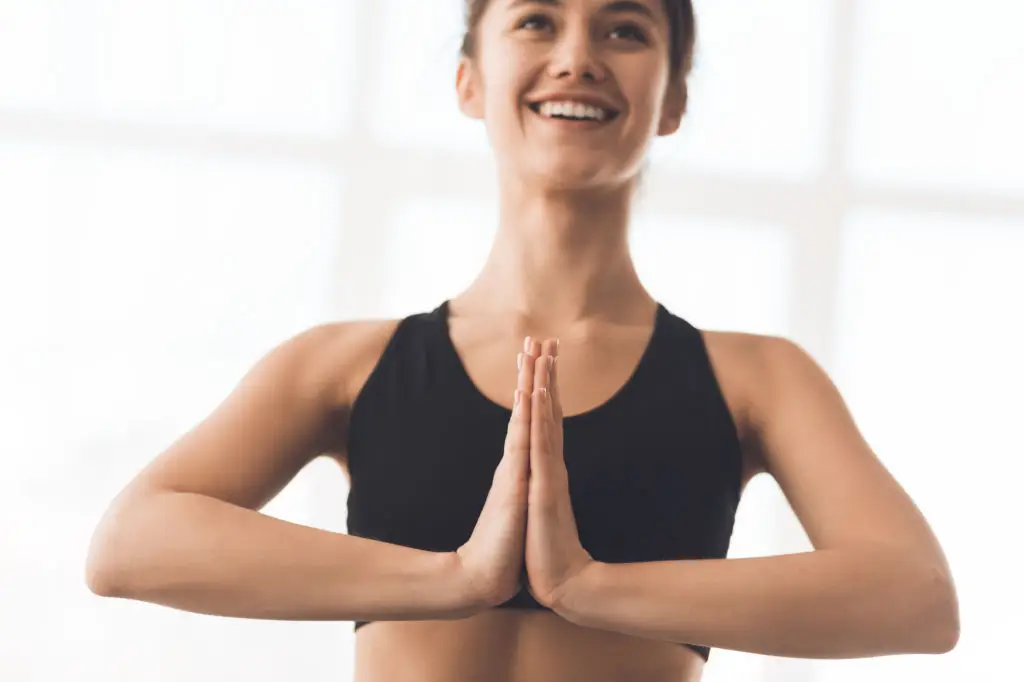
The secret ingredient in every sustainable strength plan isn’t just effort—it’s patience. Every body’s journey is unique, and honoring your own pace is both wise and empowering. Make movements smaller, limit repetitions, or take longer rests any time you need. Add a pause at the bottom of a squat or slow the speed of your bicep curl to gently raise the difficulty. If you’re tired or experiencing soreness, a restorative activity—like a gentle walk or deep breathing—counts as success, too. Keep an encouraging journal of small victories: one more squat, a little less wobble, a feeling of energy after your workout. Progress shows up in countless ways, and every mindful movement supports your muscle health, your mood, and your independence in ways worth celebrating.
12. The Heel-to-Toe Walk (Tandem Stance) — Precision for Fall Prevention
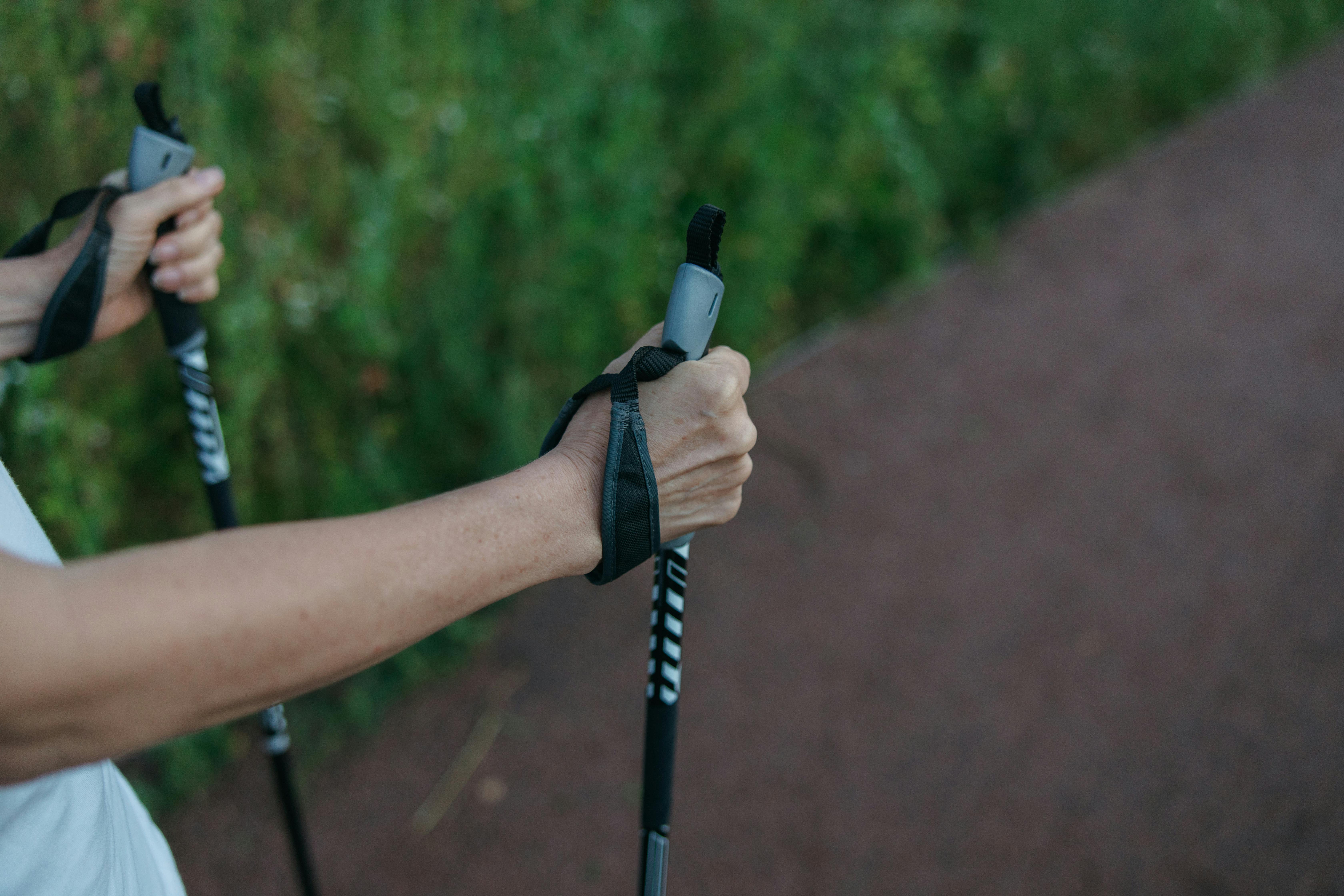
This deceptively simple exercise is a powerhouse for proprioception (your body's sense of its position in space) and dynamic balance, which is the primary defense against falls. Stand near a wall or sturdy counter for support. Place the heel of one foot directly in front of the toes of the other, as if walking on a tightrope. Slowly take 10 to 15 steps forward, focusing your gaze straight ahead. This movement forces your stabilizer muscles to work in ways that normal walking doesn't. As you gain confidence, try lifting your hands from the wall or closing your eyes momentarily (only if fully supported). Mastering the tandem stance improves confidence on uneven sidewalks and navigating tricky turns.
13. Calf Raises (Eccentric Focus) — Boosting Walking Power and Circulation
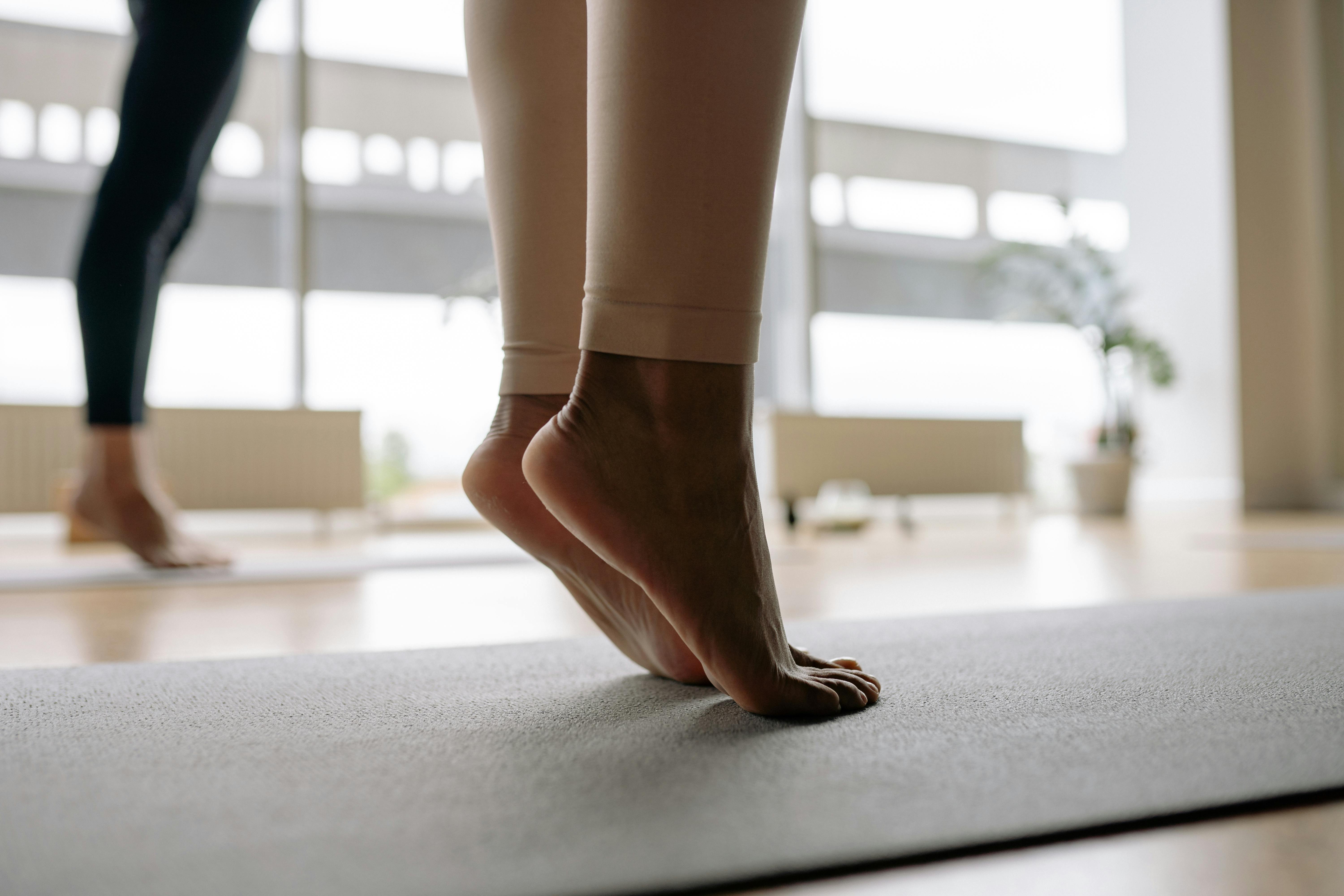
Calf strength is vital for the push-off phase of walking, helping you maintain momentum and stability. Stand near a counter or wall for support. Slowly rise up onto the balls of your feet, pause at the top, and then, here's the crucial part: take twice as long to slowly lower your heels back down. This focus on the "lowering" (eccentric) phase is where muscle strength and control are built most effectively. Repeat 10 to 15 times. Strong calves not only improve your walking speed and endurance but also act as a secondary "pump" to aid blood return to the heart, assisting overall circulation and reducing leg swelling.
14. Clamshells (Glute Medius Activator) — Lateral Hip Stability
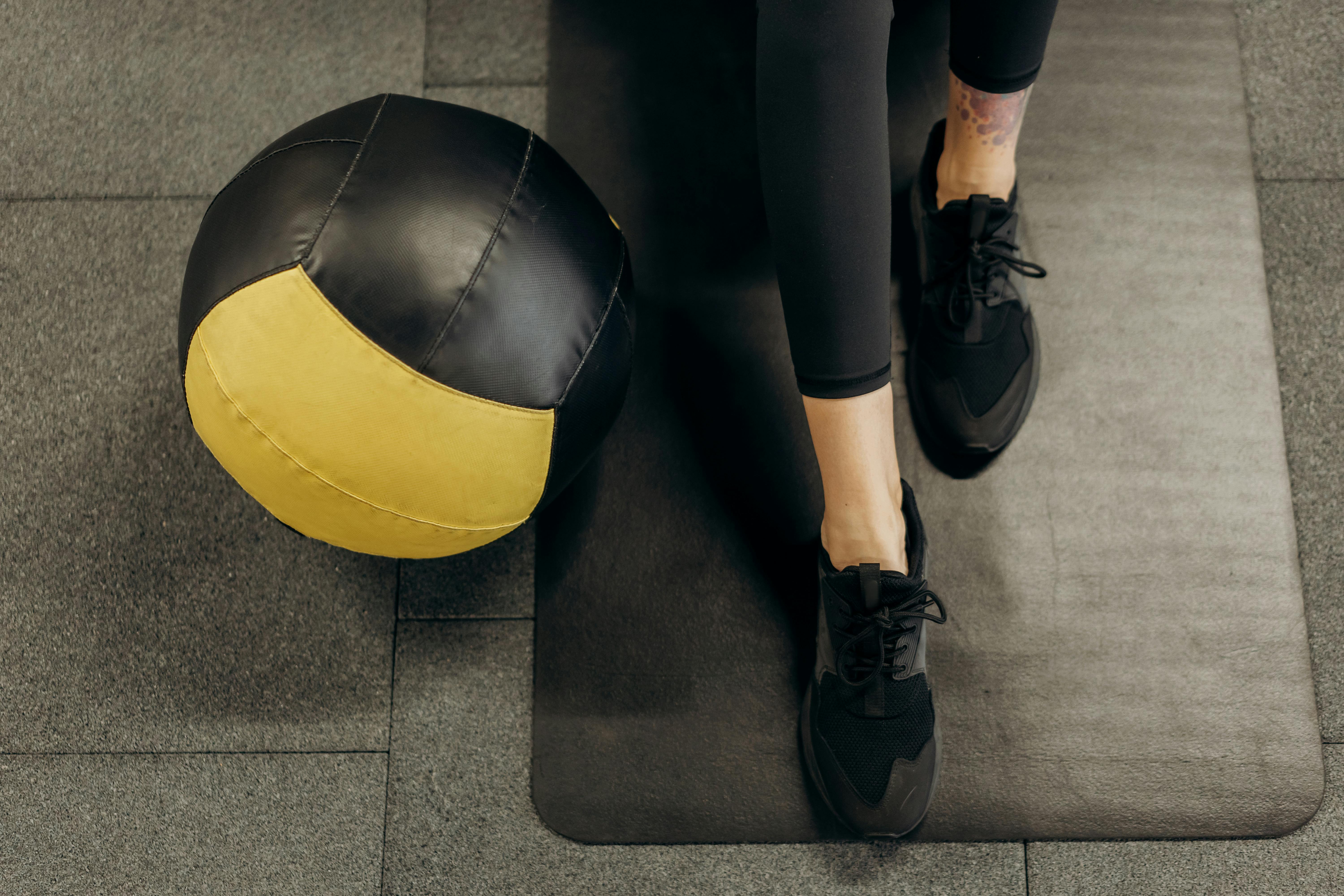
The gluteus medius (side buttock muscle) is the unsung hero of balance, preventing the hip from dropping when you walk—a movement called the Trendelenburg sign. Strengthening this area is non-negotiable for stable walking. Lie on your side with knees bent and stacked, head supported, and a small band looped around your thighs (or just use body weight). Keeping your feet touching, lift your top knee toward the ceiling, creating a clamshell shape. Move slowly and focus on the side of the hip. This simple, gentle move is incredibly effective at isolating and strengthening the stabilizer muscles critical for pain-free hips and rock-solid single-leg balance.
15. Banded Hip Abduction (Resistance for Standing Posture)
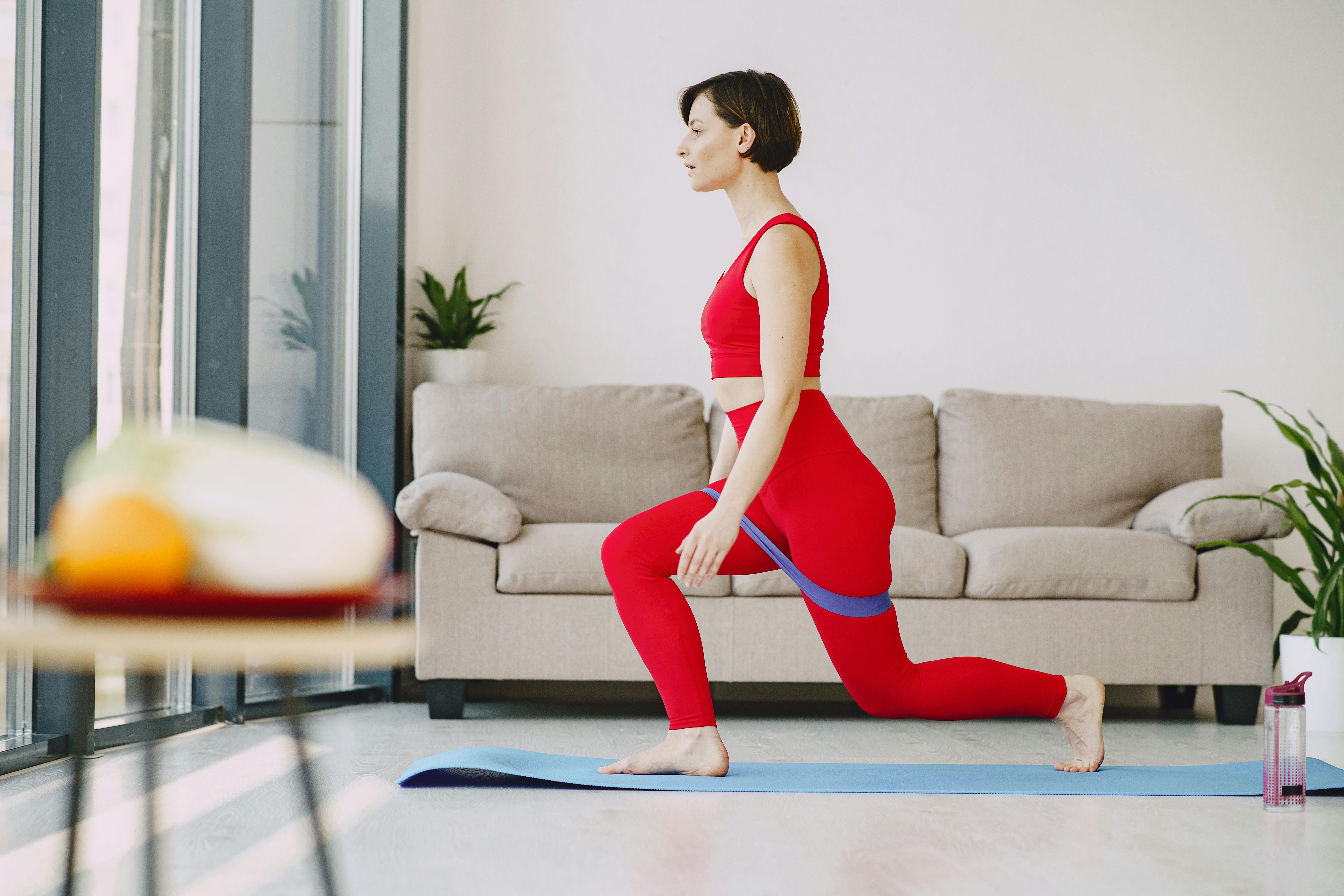
While side leg raises are great, adding resistance specifically trains the lateral hip muscles needed for standing posture and avoiding sway. Secure a light resistance band around your ankles (or knees). Stand tall near a chair. While keeping your torso perfectly straight and your toe pointed forward, take a small, controlled step directly out to the side against the band's resistance, then bring your feet back together. This movement directly mimics the stabilizers needed when transferring weight or catching yourself during a stumble. Focus on maintaining alignment and avoiding leaning. This move builds crucial strength in the pelvis and outer thighs for all-day confidence.
16. The Bird-Dog (Controlled Spinal Stability) — Low-Impact Core
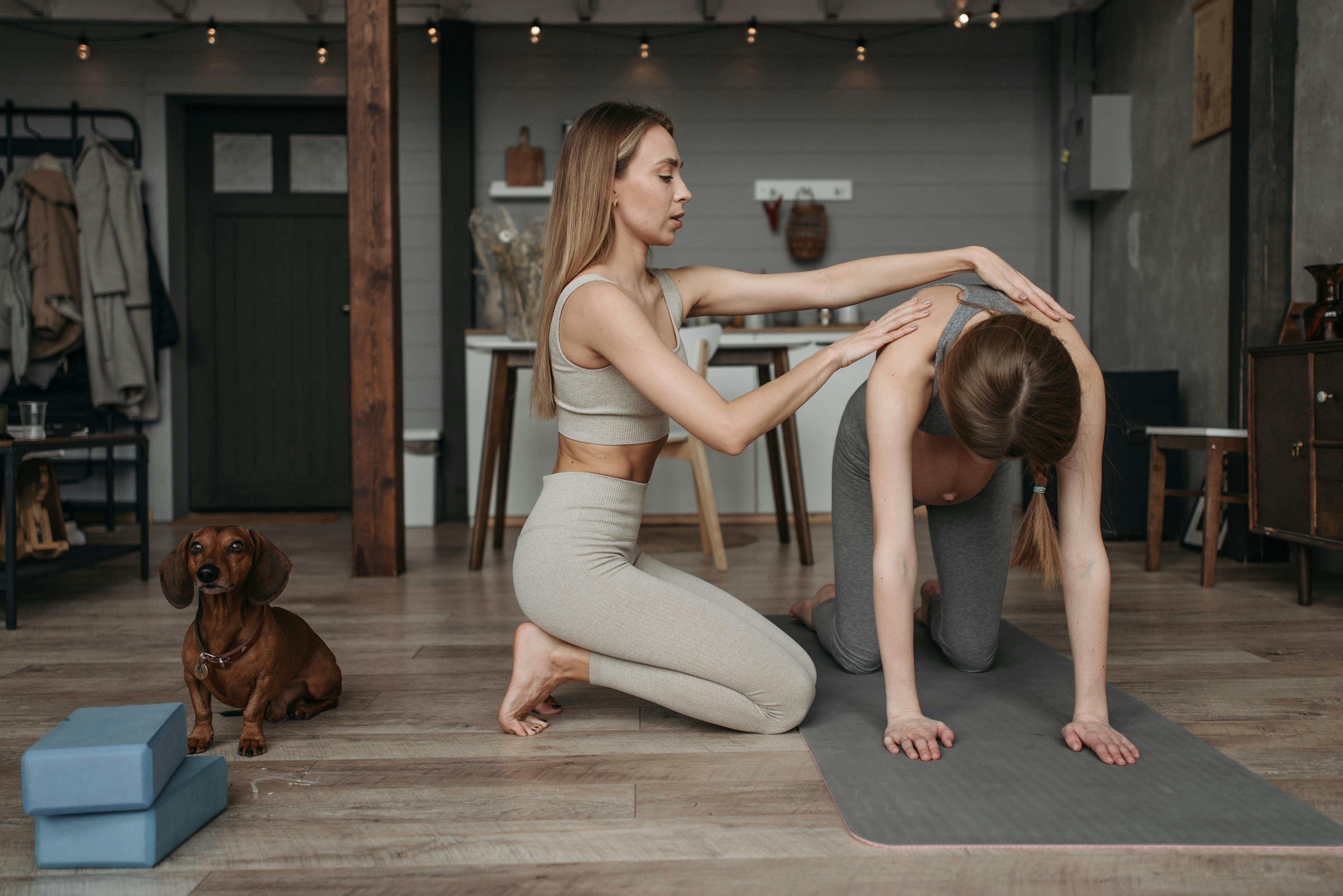
The Bird-Dog is a low-impact core exercise that strengthens the deep muscles responsible for spinal stability and balance without putting strain on the lower back. Start on your hands and knees. Simultaneously extend one arm straight forward and the opposite leg straight back, keeping your back flat and your hips level. Pause briefly, then return to the start and switch sides. The key is slow, controlled movement—imagine balancing a cup of tea on your lower back. This move teaches your core to resist rotation and maintain a neutral spine, a foundational skill that makes everything from lifting to reaching overhead safer and easier.
17. Farmer's Carry (Grip and Core Stability)
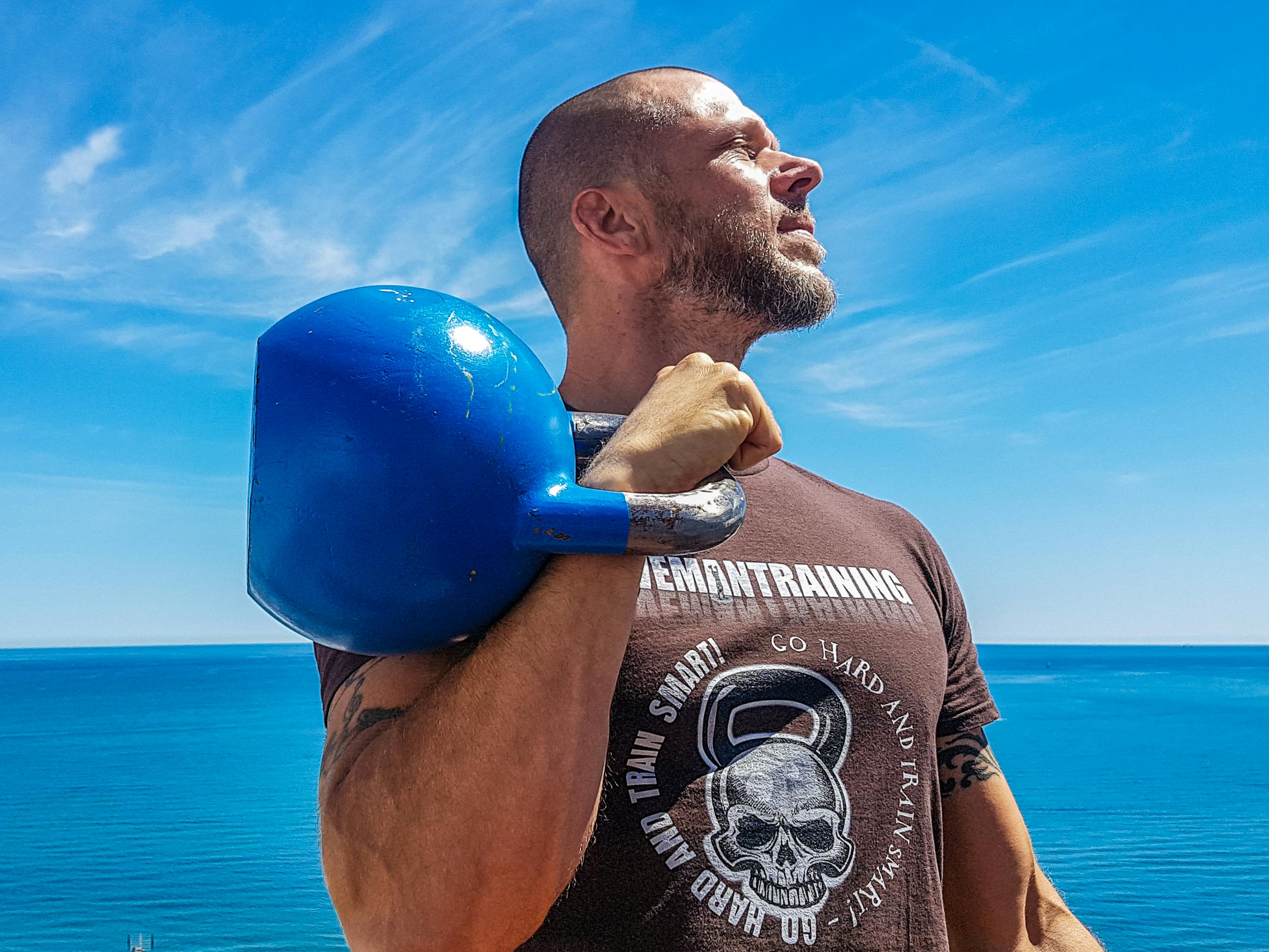
The Farmer's Carry is the ultimate functional exercise, mimicking the act of carrying heavy groceries or luggage. Hold a moderately heavy weight (e.g., a gallon jug of water, a dumbbell) in one hand only. Walk slowly and steadily for 30 seconds to one minute, then switch hands and walk back. This forces your deep core muscles (obliques and stabilizers) to work intensely to prevent your torso from tilting, building full-body stability and essential grip strength. Improving your grip is directly linked to better longevity and reduces the risk of drops and spills in daily life.
18. Standing Cable Chop or Band Pull (Rotational Power)
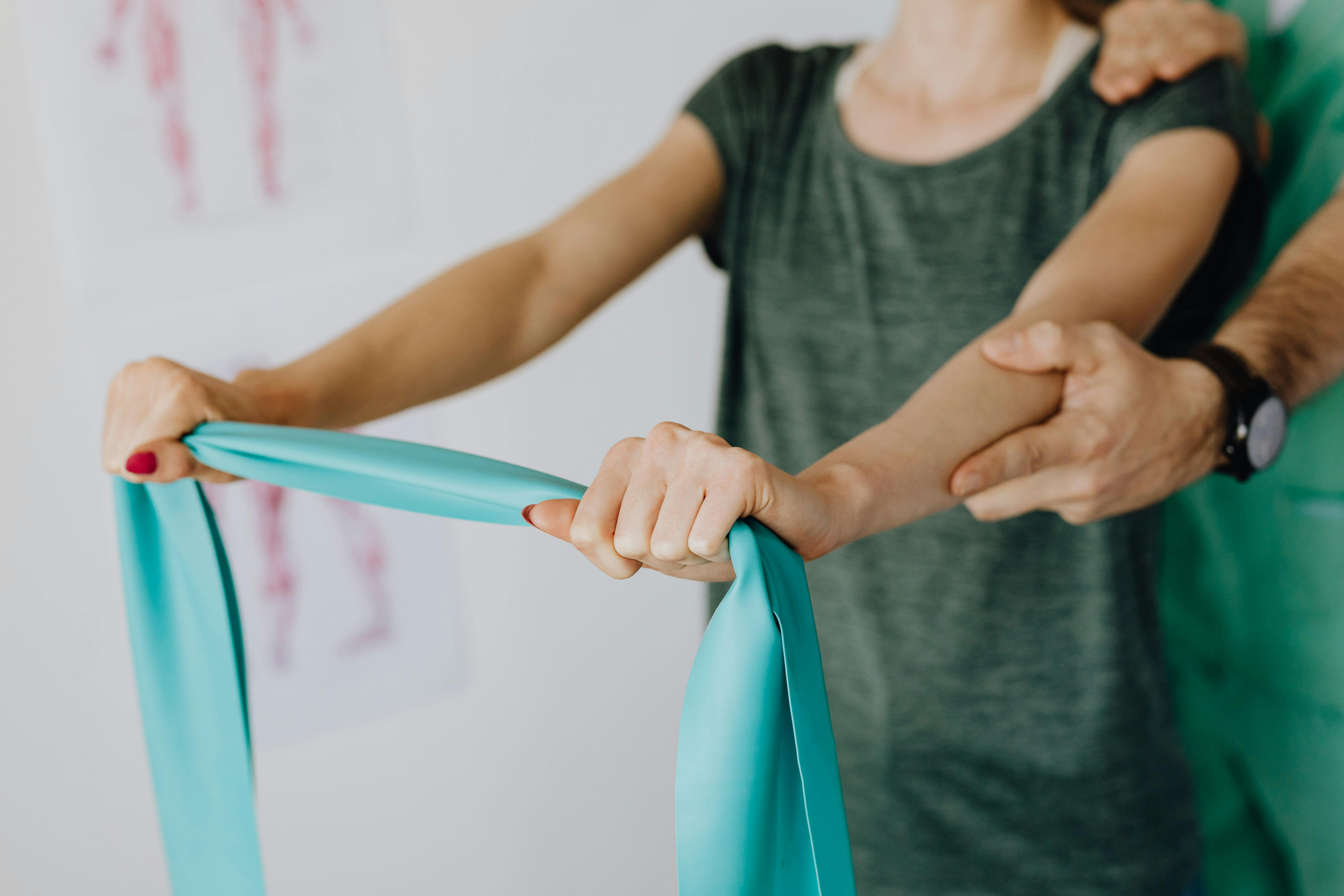
Rotational strength is vital for safely twisting to look behind you, getting in or out of a car, or moving loads. Stand with feet shoulder-width apart, holding a light resistance band anchored to a sturdy object (or simply clasp your hands). Keep your arms straight and rotate your torso, pulling the band diagonally from high on one side (e.g., left shoulder) down across your body to the opposite side (e.g., right hip). Repeat 10 times, then reverse the diagonal. This builds core and shoulder stability in the transverse plane, significantly reducing back strain during everyday twists.
19. Single-Leg Clock Reaches (Dynamic Balance with Reach)
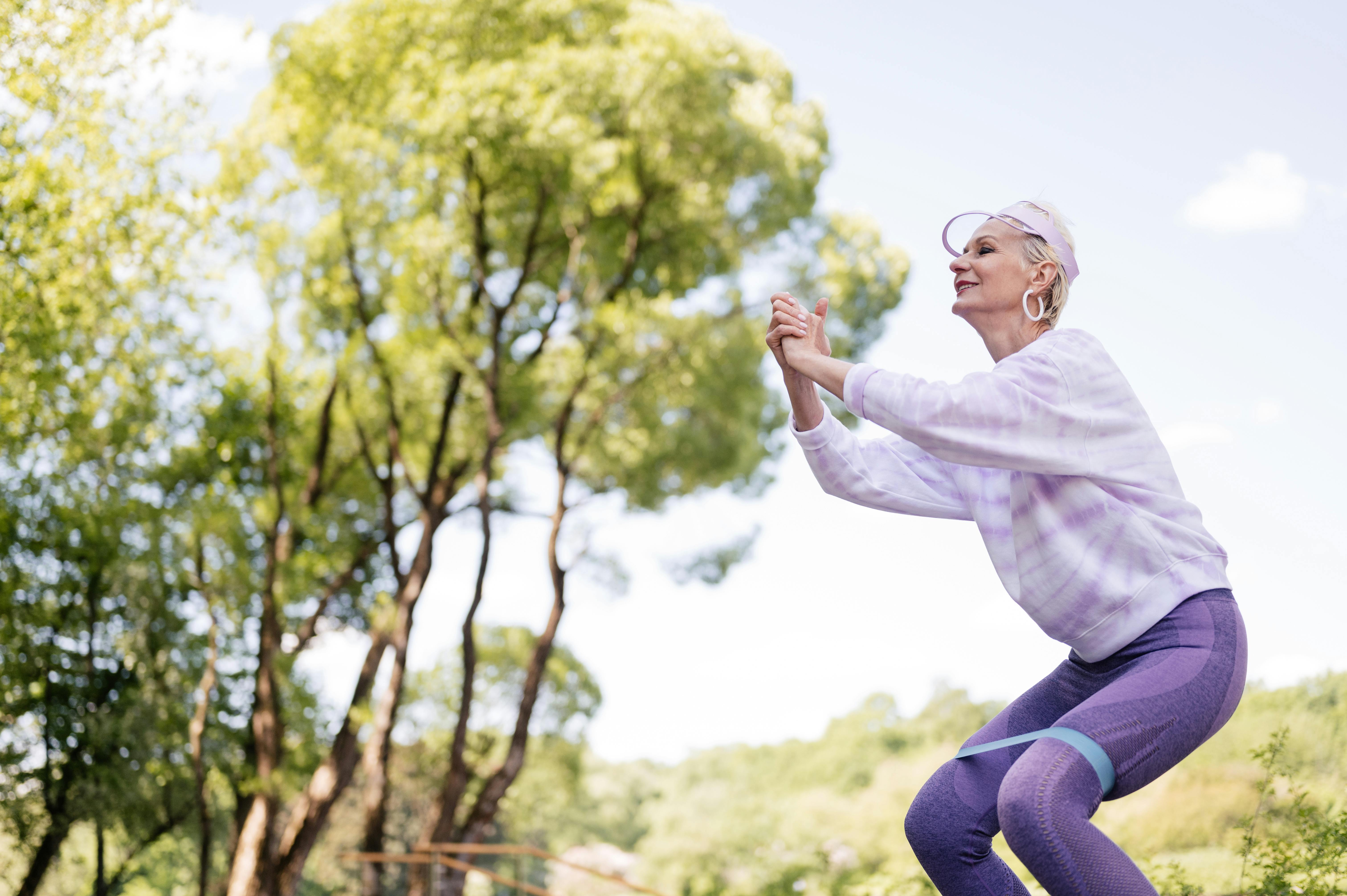
This move trains the body to stay balanced while the center of gravity shifts, a common cause of falls (e.g., reaching for a low shelf). Stand on your left leg (hold a chair for support). Slowly reach your right foot out to tap the floor lightly at different points, like the 12, 3, and 6 o'clock positions, keeping the majority of your weight on the standing leg. The tapping foot is weightless. This improves dynamic balance and strengthens the standing hip and ankle stabilizers, preparing you for safe reaching without having to put both feet down.
20. Hip Circles (Standing/Supported) — Full Range-of-Motion Mobility

Healthy hips are fundamental for walking and preventing knee pain. Stand tall, holding onto a sturdy chair or wall for full support. Keeping your leg straight (but knee soft), slowly move your hip in a large, controlled circle forward, out, back, and in. Perform 8 to 10 slow, fluid circles in one direction, then reverse the motion before switching legs. This mobilizes the entire hip capsule and gently builds strength through the full range of motion, lubricating the joints and improving the flexibility needed for a safe, wide walking stride.
21. Prone Scapular Squeeze (Upper Back Posture)
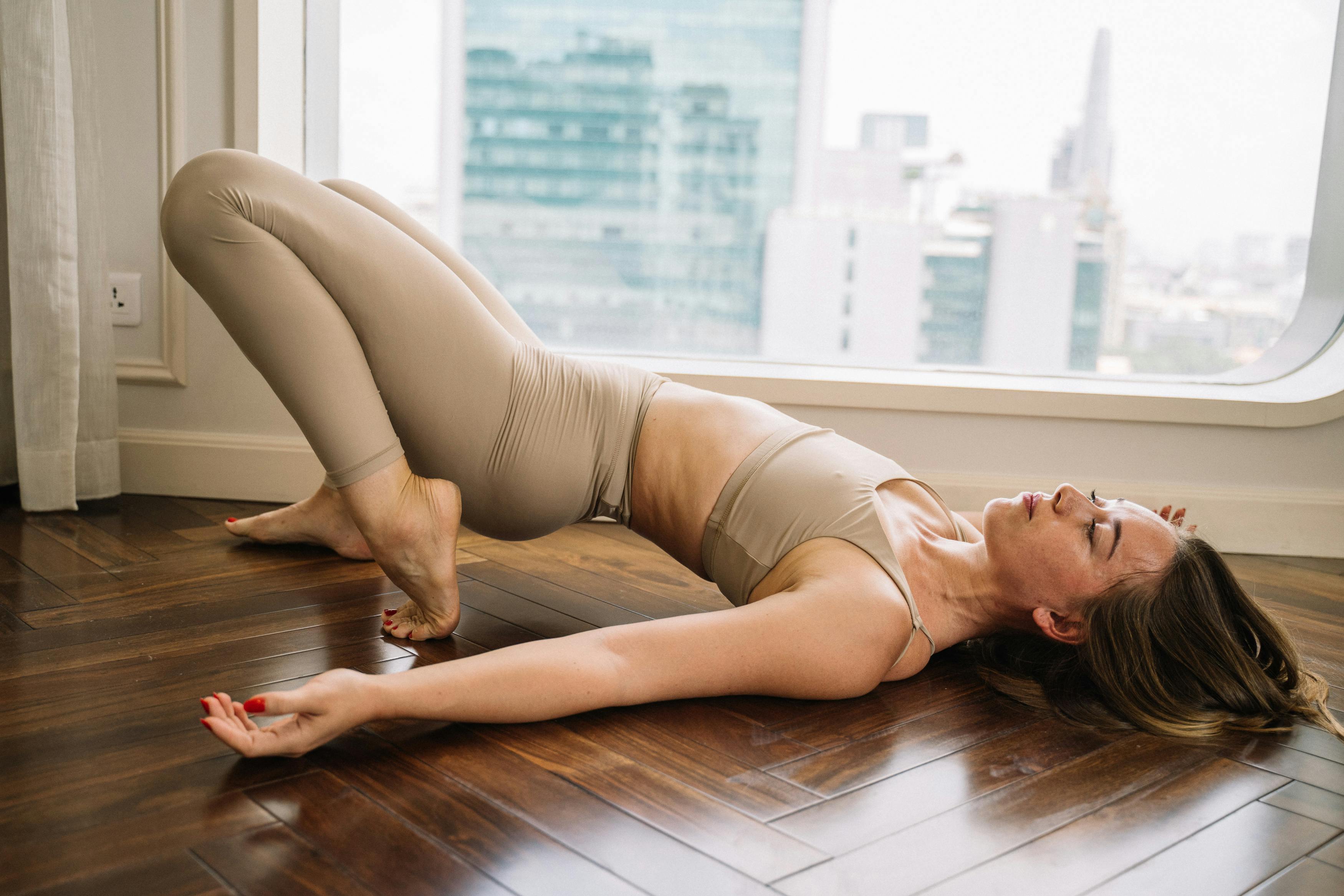
Poor posture and rounded shoulders weaken the upper back muscles, making everyday lifting feel heavier. Lie face down on a mat with your arms resting by your sides, palms facing down. Gently lift your chest and head slightly off the floor (a mild back extension) while squeezing your shoulder blades together. Hold the squeeze for a count of three, then gently release and rest. Aim for 10 repetitions. This low-impact move strengthens the neglected muscles between your shoulder blades, helping you stand taller and providing the postural strength needed to stabilize your core during lifts and carries.
22. Single-Leg Hip Hinge (Supported Balance)
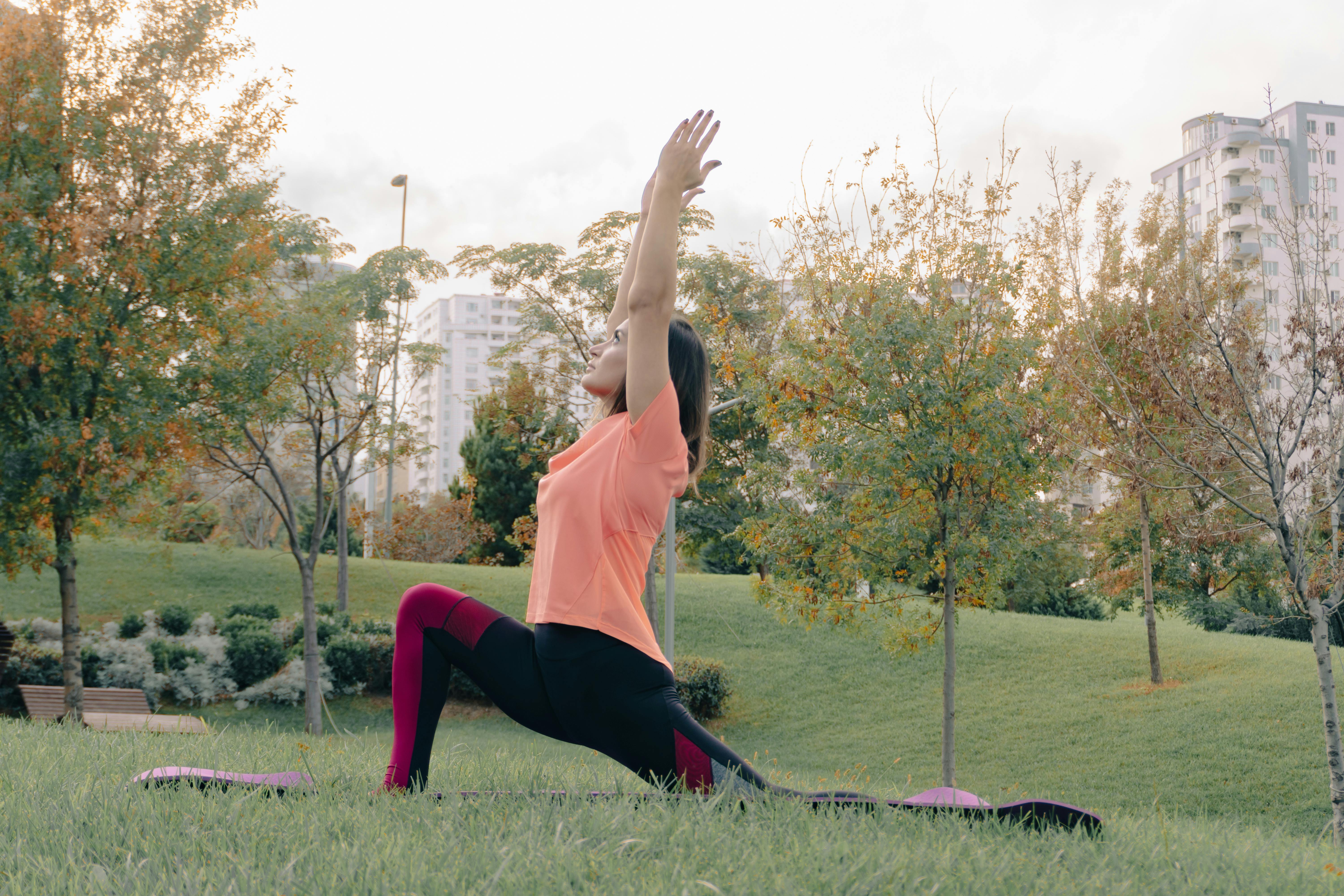
This move combines the essential hip hinge (for safe bending) with a gentle single-leg balance challenge. Stand beside a sturdy chair for support. Slowly shift your weight onto your leg nearest the chair. Keeping that knee slightly bent and a long, flat back, hinge forward at the hip, extending the opposite leg backward until your torso is nearly parallel to the floor. Return to vertical slowly, squeezing the standing glute. This complex motion strengthens the entire posterior chain on the standing leg, improving the stability needed for tasks like stepping and recovering from a trip.
23. Toe Splay and Grip (Foot Intrinsic Muscle Strength)
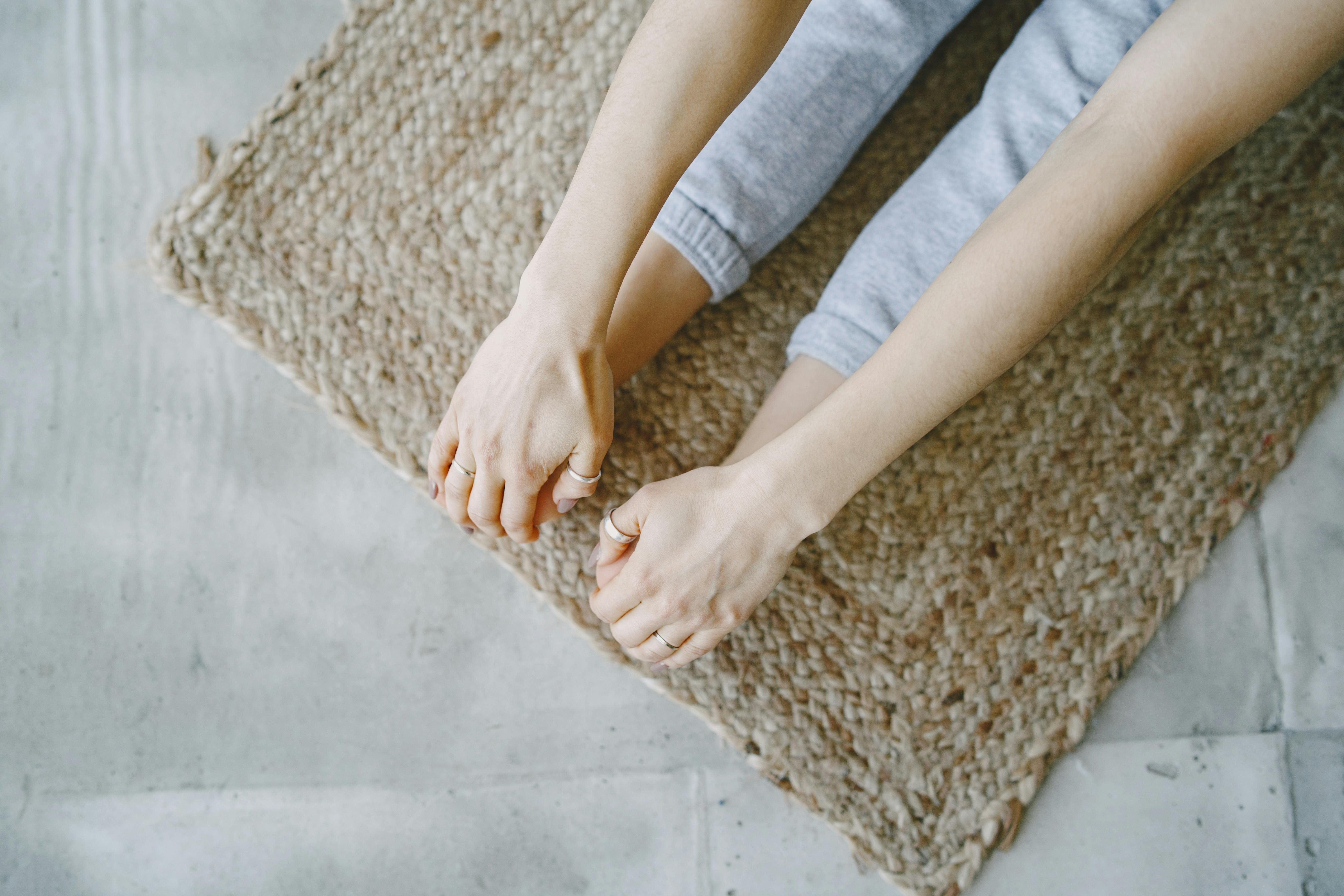
Balance starts with the foundation—your feet. Sit in a chair or stand holding a counter. Gently press your toes wide apart ("splaying" them), hold for a count of three, then try to gently grip the floor or mat by curling your toes (like a claw). Repeat 10 times. This exercise trains the intrinsic muscles of the foot, which are the tiny, critical stabilizers that provide subtle balance adjustments and ground feedback, helping you sense and react to uneven terrain or rugs.
24. Negative Wall Sit (Eccentric Quad Control)
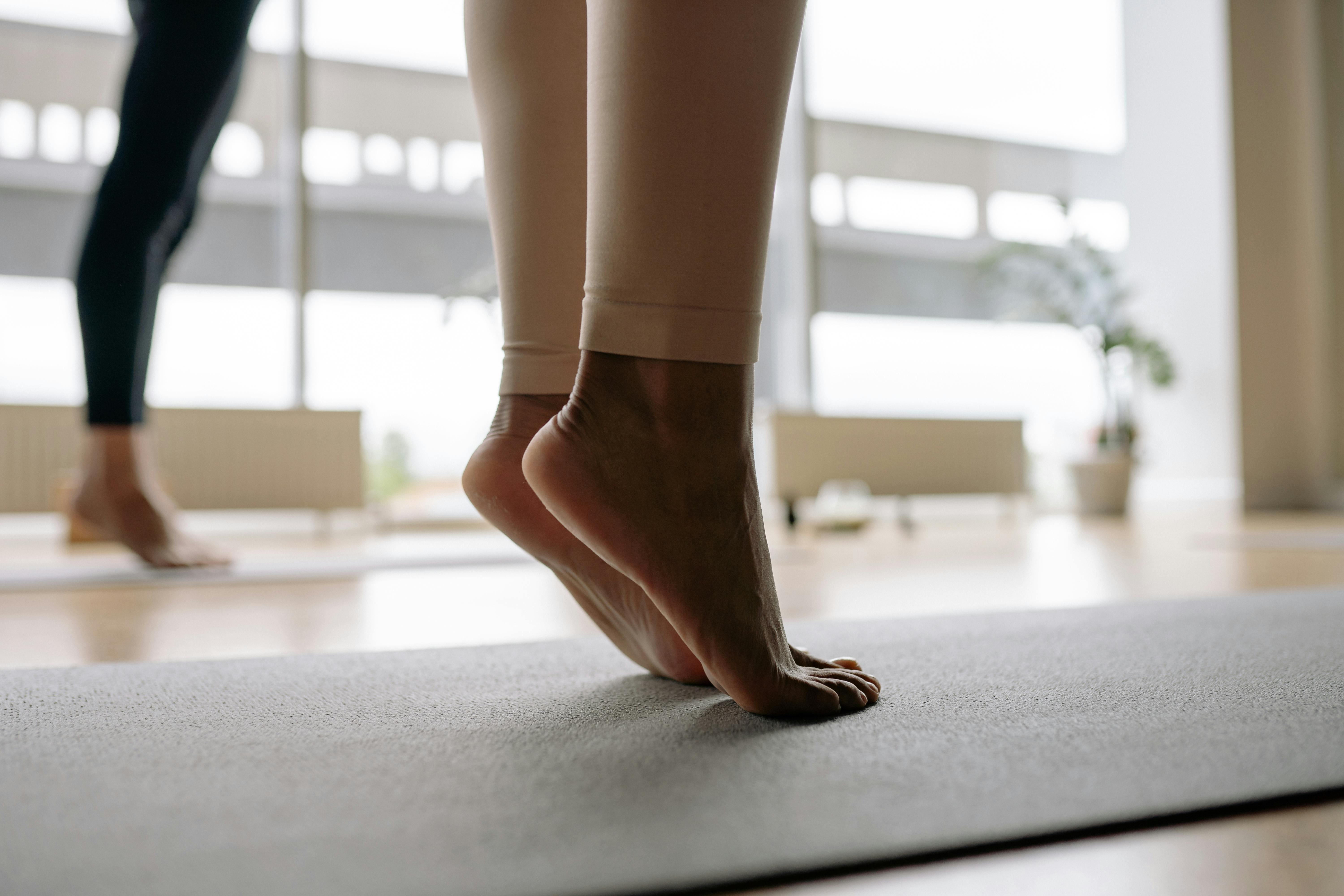
This move strengthens the thigh muscles (quadriceps) by focusing on the eccentric (lowering) phase of a squat, which is vital for controlling descent and preventing falls. Stand near a wall. Slide down into a squat position until your thighs are slightly above parallel (hold 5 seconds). Now, take 10 full seconds to slowly, slowly rise back up. The slow upward phase builds powerful control. If you feel pain, keep the squat range small. This intentional control improves your muscle's ability to safely decelerate your body during everyday movements.
25. Head Turns in Tandem Stance (Vestibular Challenge)
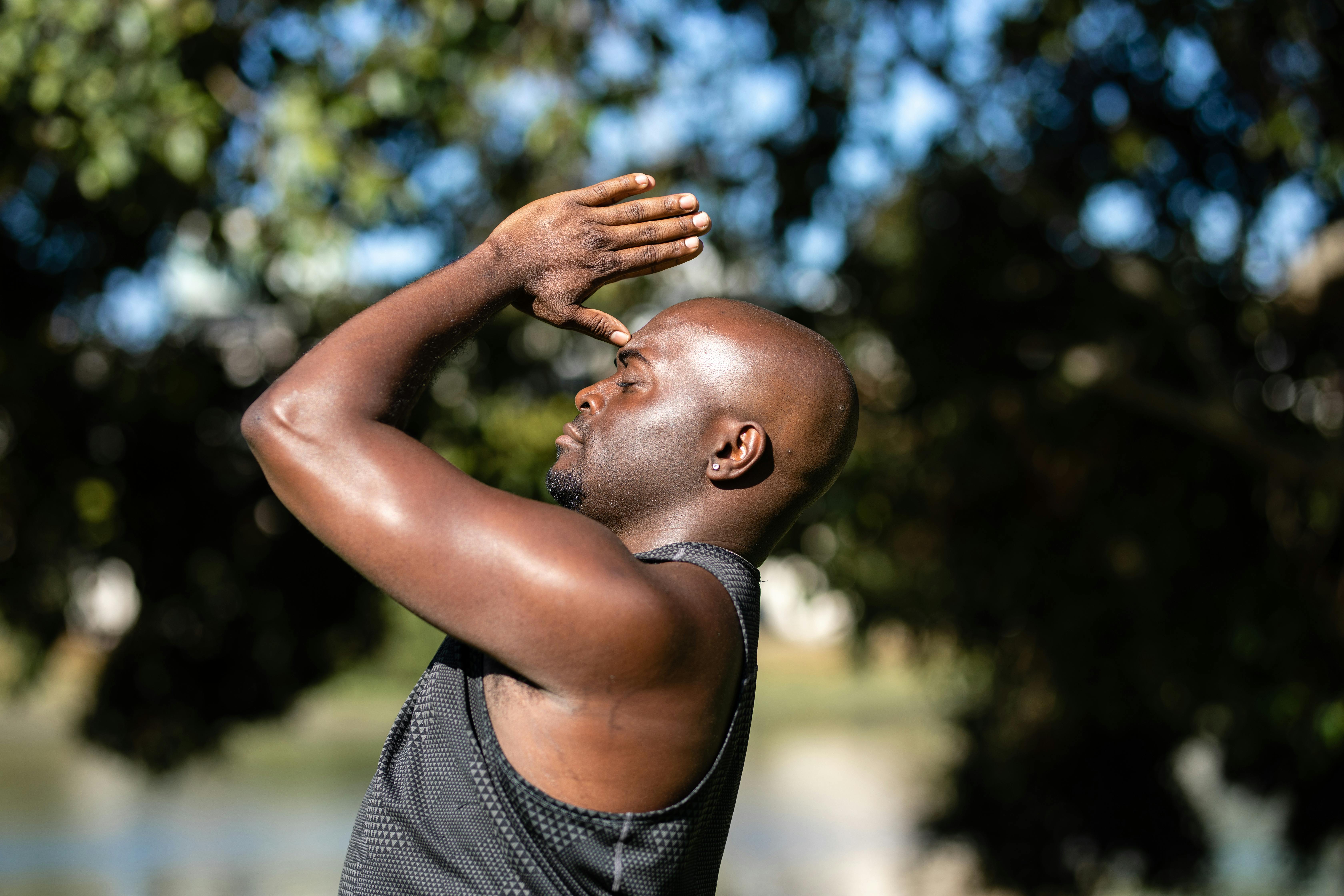
This exercise integrates balance with the vestibular system (inner ear), preparing you for real-life movements like quickly turning to answer a call. Stand in the heel-to-toe position (Tandem Stance) with a finger lightly touching a wall. Once steady, slowly turn your head from side to side (looking left, then right) 10 times, keeping your body still. This trains your eyes and inner ear to work together, improving stability and reducing the dizziness that often accompanies rapid head turns or looking up/down.
26. Dynamic Diagonal Reach (Cross-Body Integration)
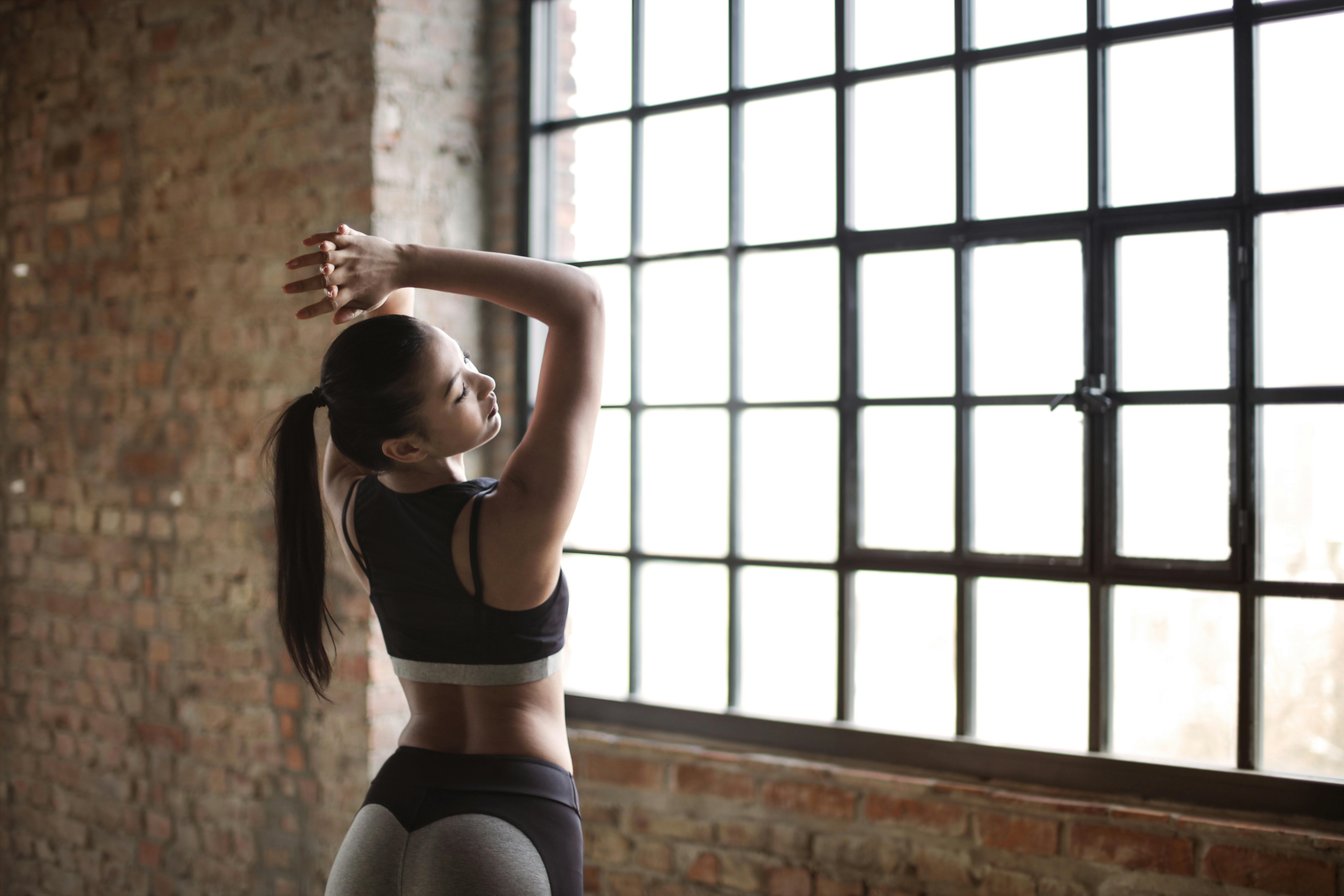
This functional movement trains the entire cross-body chain (from foot to shoulder) needed for safely reaching and twisting. Stand in a slight staggered stance. Extend your right arm high and across your body towards the upper left corner of an imaginary box, while gently bending your opposite knee. Return slowly, then switch to the other side (left arm to upper right corner). This controlled, multi-directional reaching activates the oblique muscles and hip stabilizers, improving the complex coordination needed to avoid falling when reaching for objects off-center.
27. Supported Single-Leg Bridge (Glute & Hamstring Control)
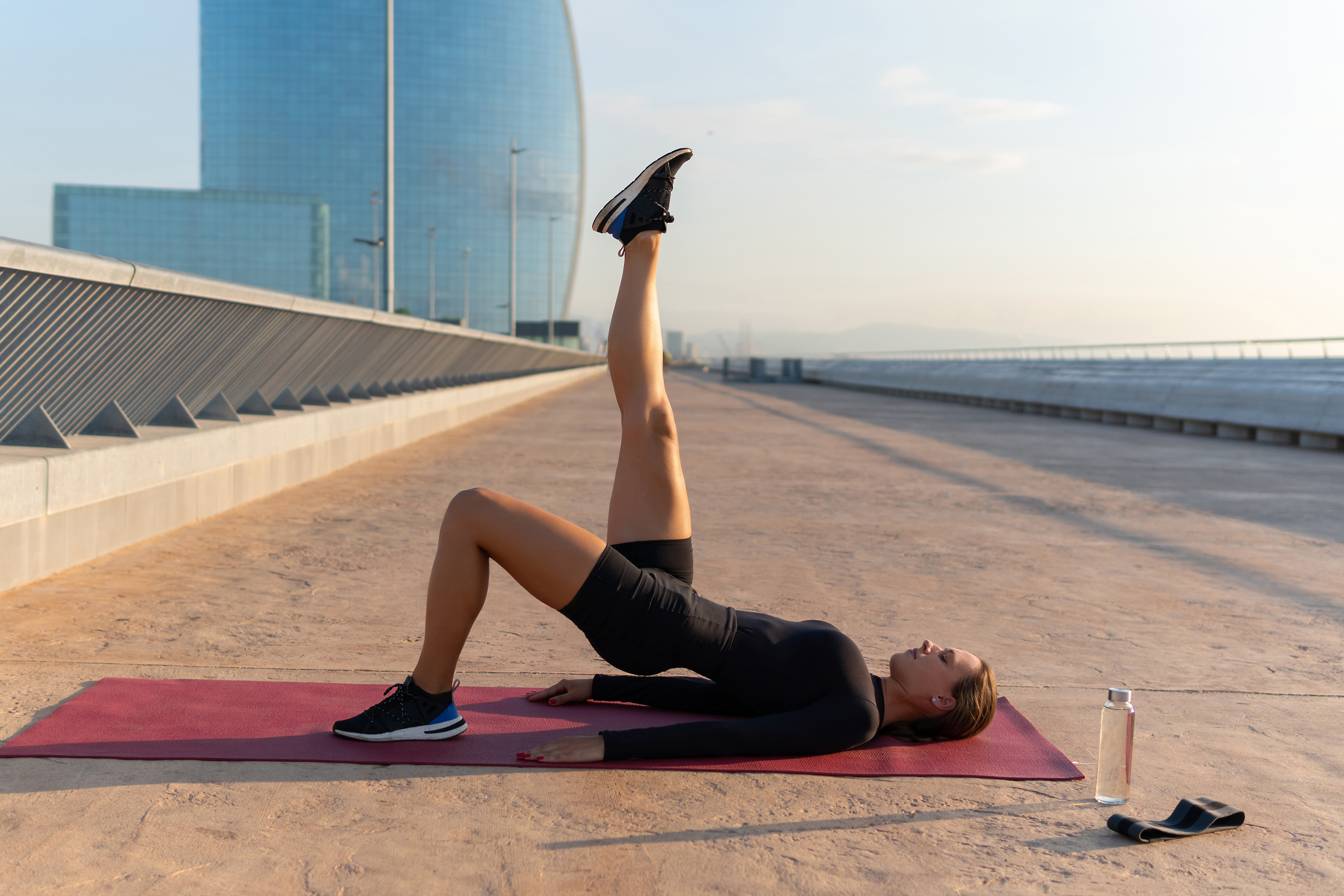
This exercise powerfully strengthens the glutes and hamstrings, which are crucial for maintaining an upright posture and generating the "push-off" for walking, all from a joint-friendly position. Lie on your back with both knees bent and feet flat on the floor. Lift one leg straight up or keep the foot hovering near the floor. Pressing down through the heel of the grounded foot, lift your hips up off the floor until your body forms a straight line from your shoulder to your knee. Hold briefly, focusing on squeezing the buttock of the grounded leg, then lower slowly. This move builds immense control for single-leg stability, directly translating to smoother, less wobbly walking and safer stair climbing, as it trains the muscles used when one foot is off the ground.
28. Eccentric Step-Downs: Harnessing The Brake
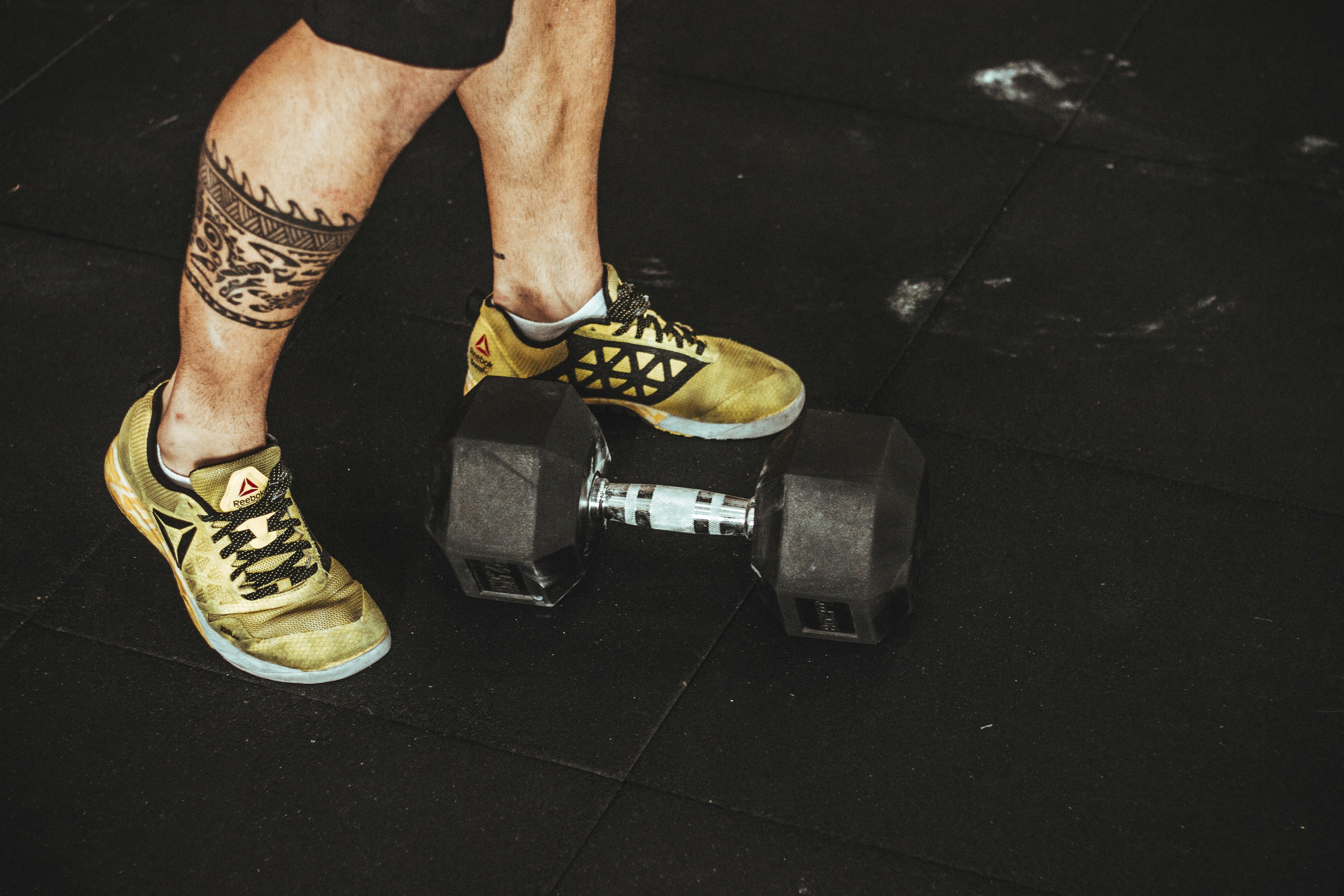
This exercise is essential for fall prevention, as it trains the eccentric phase—the muscle's ability to lengthen under tension, which is your body's natural "brake" when going down stairs or recovering from a slip. Stand facing a small, sturdy step (two or three inches high). Slowly shift your weight onto the stepping leg and take 5 to 8 seconds to slowly lower your opposite heel toward the floor, barely tapping it. Immediately rise back up. The slow lowering motion builds incredible control in the quadriceps and hip stabilizers. This movement directly strengthens the exact muscles and neurological control required to manage transfers, descend stairs safely, and maintain balance when your center of gravity unexpectedly shifts.
29. The Finger-Wall Crawl: Gentle Range for Shoulder Health

Shoulder stiffness can severely limit independence, making reaching and dressing difficult. The Finger-Wall Crawl is a zero-impact, self-limiting exercise that gently restores range of motion without risk of strain. Stand facing a wall, a foot or two away. Using only your fingertips, slowly "crawl" your fingers up the wall as high as you comfortably can, stopping just before any pain. Hold for a moment, then slowly "crawl" back down. This movement improves shoulder mobility, encourages proper upper back posture, and lubricates the shoulder joint—essential for maintaining the ability to put on a coat, comb your hair, or reach for objects on high shelves with greater ease.
30. Chair Side Bends (or Weighted Oblique Flexion): Stability for The Spine
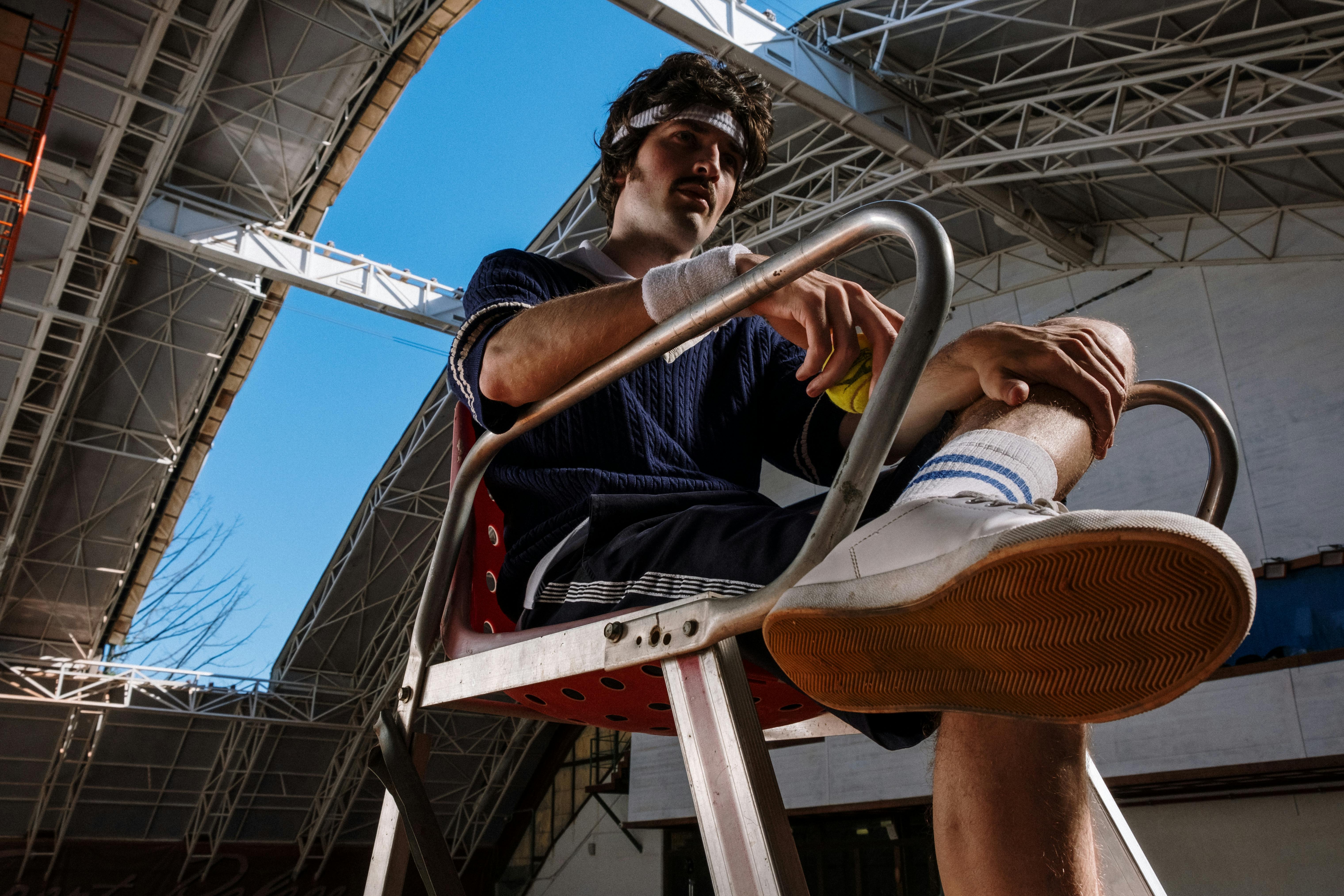
Rotational stability and side-to-side strength are crucial for spinal health, preventing the kind of minor twists and bends that cause strain when you tie a shoe or reach diagonally. Sit tall on the edge of a sturdy chair with feet flat, holding a light weight (or simply clasp your hands) against your chest. Keeping your hips fixed, slowly lean your torso directly to the side, then use your oblique muscles (side abdominals) to pull yourself back to vertical. Avoid leaning forward or backward. This controlled movement directly strengthens the core muscles responsible for side-body stability, ensuring your spine stays protected and upright during all functional movements like getting up or out of bed.
31. Seated Ankle Alphabet: Foundation Work for Ground Sense
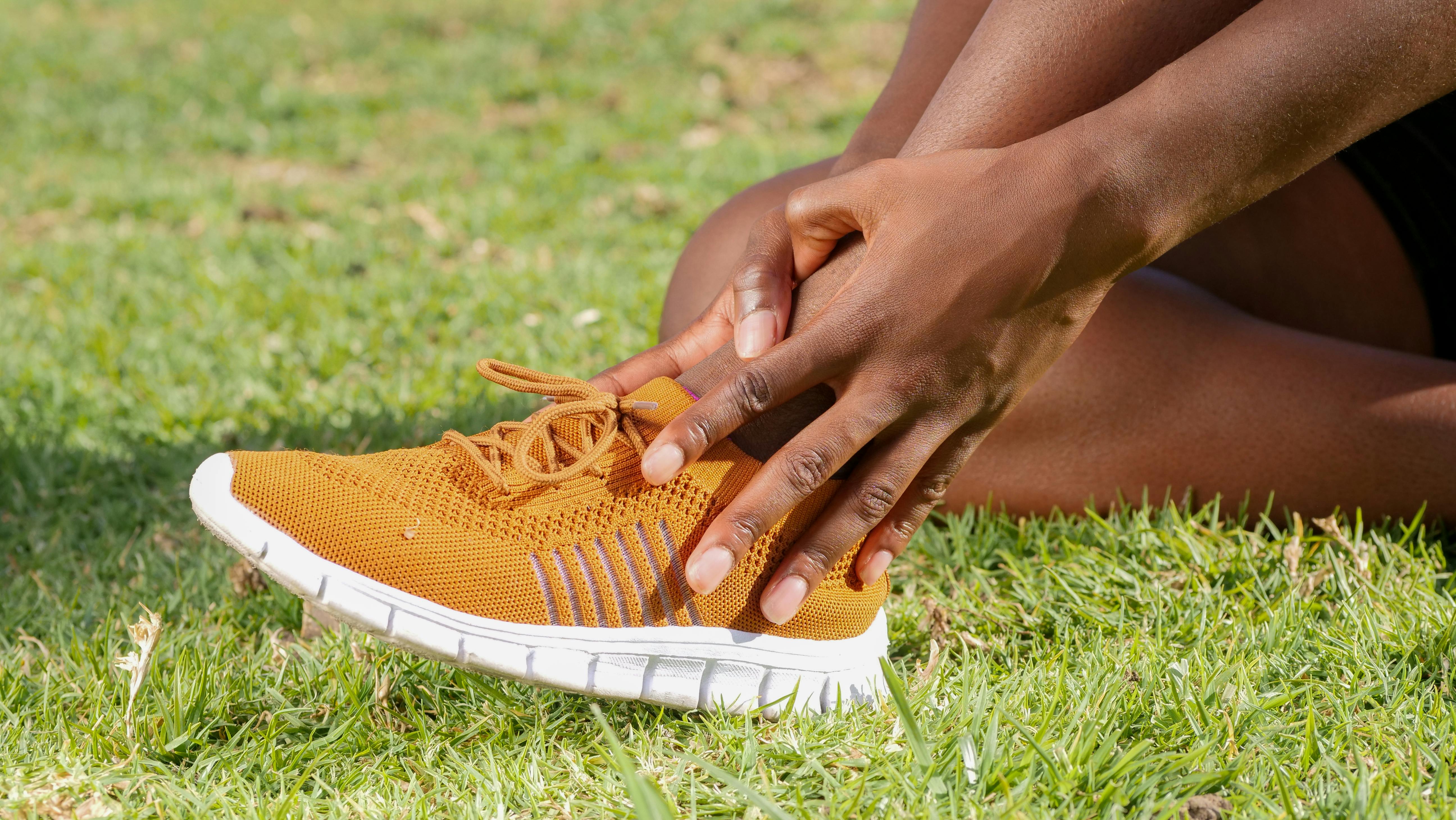
Strong feet and ankles are the foundation of balance, yet they are often overlooked. This simple, seated exercise targets the tiny stabilizing muscles that help you "read" the ground beneath you. Sit in a chair with one foot slightly raised off the floor. Slowly use your foot and ankle to "draw" the letters of the alphabet in the air, from A to Z. Keep the movement focused entirely in the ankle and foot, not the leg. This trains the joint's full range of motion, improves circulation, and strengthens the crucial intrinsic foot muscles and ligaments. Better ground sense and ankle strength mean less tripping and more confidence on uneven sidewalks or when stepping off curbs.
32. The Glute Squeeze (Standing or Seated): Power for Upright Posture
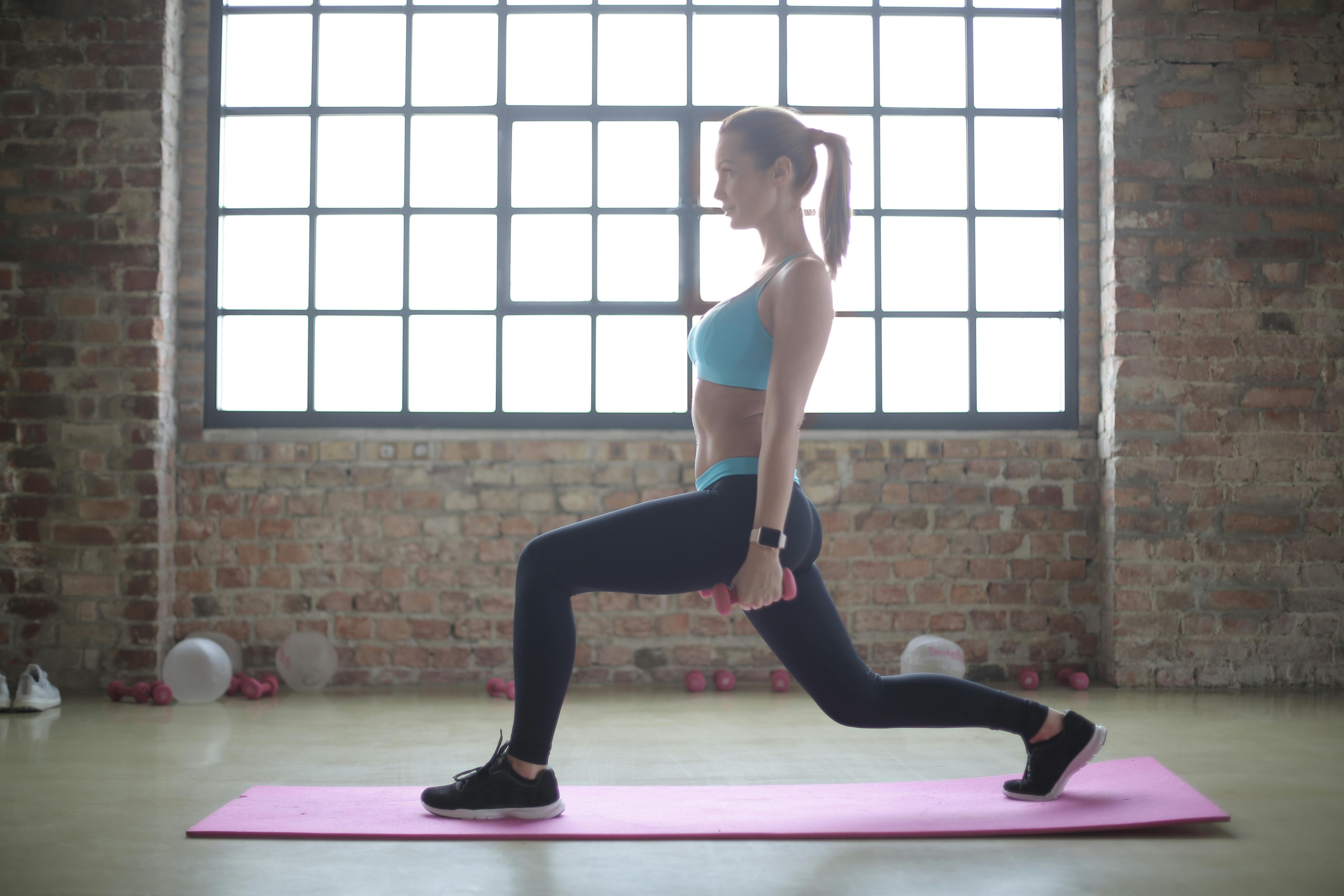
The glutes (butt muscles) are the body's largest and most powerful muscles, essential for standing, walking, and maintaining an upright spine, yet they often become dormant with age. This is a non-movement activation drill. Stand or sit tall. Simply squeeze your buttocks together as tightly as possible, without changing the position of your pelvis or holding your breath. Hold the maximum squeeze for a count of 5, then completely relax. Repeat 10 to 15 times. Making this a daily, conscious habit retrains the mind-muscle connection, improving postural endurance, reducing lower back strain, and ensuring your most powerful muscles are "awake" and ready to fire whenever you need to stand, climb stairs, or lift something safely.
33. Marching with Opposite Arm Swing (Gait Coordination)
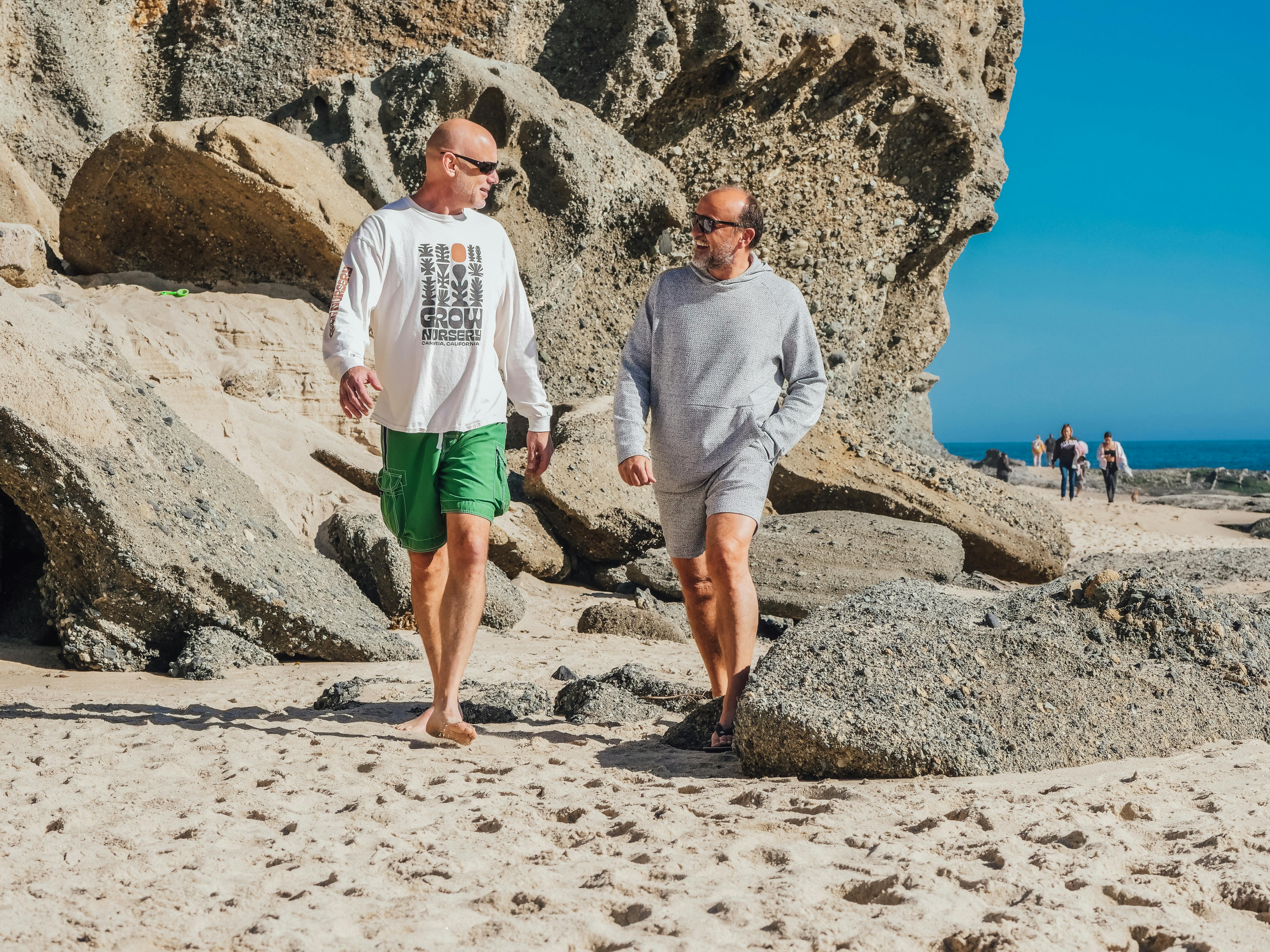
This exercise intentionally trains the cross-body coordination necessary for a natural, safe walking gait, helping to eliminate a stiff or shuffling stride often associated with fall risk. Stand tall behind a chair for support. Slowly lift your left knee as high as comfortable while simultaneously swinging your right arm forward. Lower, then immediately switch: lift the right knee as you swing the left arm forward. The focus is the opposite arm/leg pattern and maintaining a steady, rhythmic pace. This move builds fluid, integrated coordination and strengthens the deep core muscles that stabilize the spine during walking, ensuring your natural arm swing supports your balance.
34. Seated High Knee March (Toe Clearance and Trip Prevention)

This simple, seated drill directly addresses the common problem of tripping due to poor toe clearance and weak hip flexors. Sit tall on the edge of a sturdy chair with feet flat. Alternate slowly lifting one knee as high as possible, bringing your thigh closer to your chest. Hold for a count of one at the top and lower with control, switching legs immediately. The goal is a controlled lift, not speed. This strengthens the hip flexors (the muscles that lift your foot off the ground) and helps improve the habit of clearing your toes safely over thresholds and rugs, significantly reducing a major fall risk.
35. Lateral Shuffles (Side-to-Side Stability and Quick Reaction)
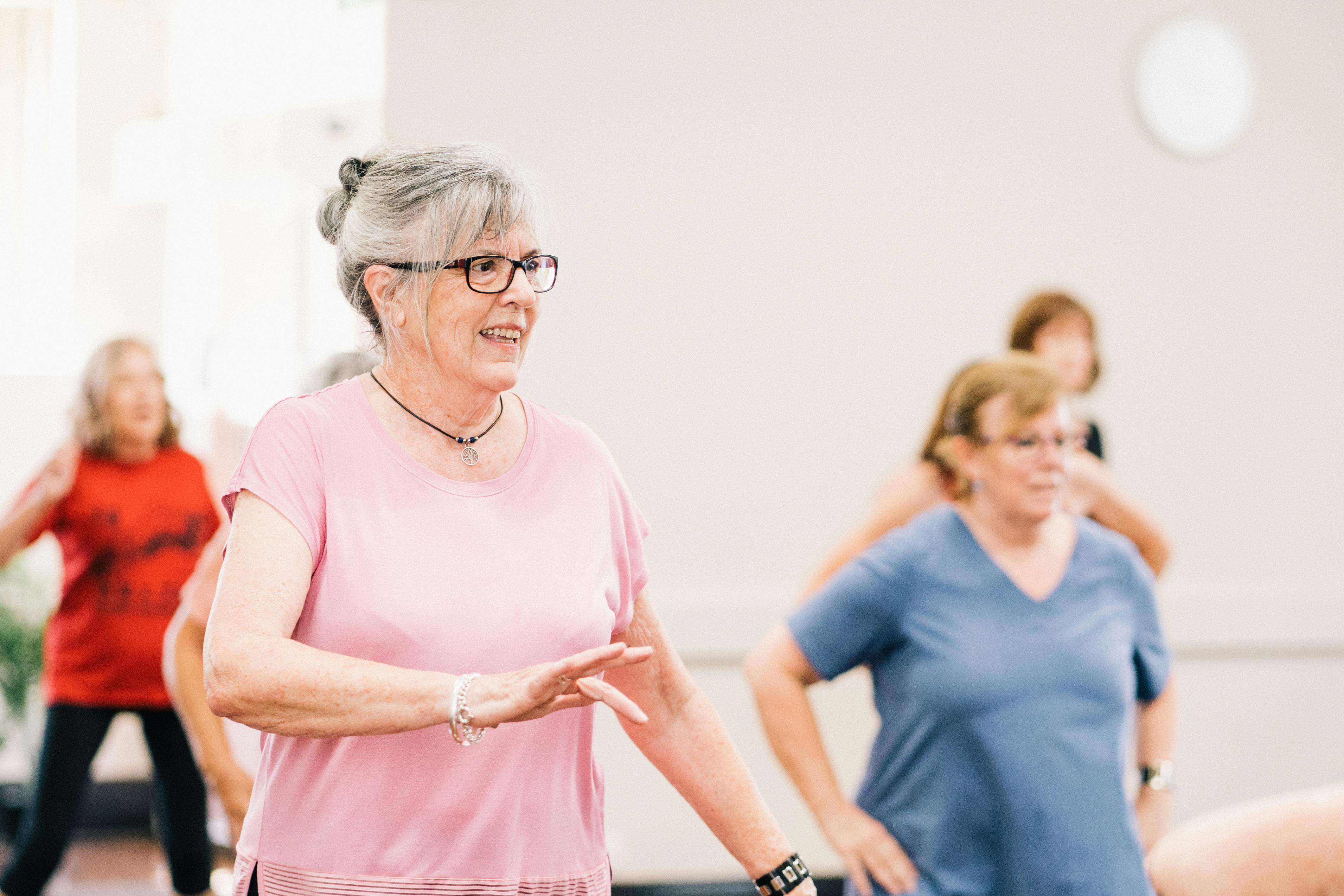
While most strength training focuses on forward/backward movement, the ability to step quickly side-to-side is critical for recovering from a slip or avoiding an obstacle. Lateral shuffles train your inner and outer thigh muscles and the fast-twitch fibers needed for sudden, protective reactions. Stand tall with a chair or wall nearby for light support, if needed. Take a controlled, quick step to the right with your right foot, bringing your left foot to meet it. Immediately repeat for 5-10 steps, then reverse direction. The key is to stay slightly crouched and avoid letting your feet cross. Start with small, slow steps and gradually increase speed only as confidence allows. This builds the dynamic lateral stability that is your body's best defense against unexpected trips and falls on uneven ground.
36. Prone Glute Kicks (Hip Extensor Activation)

This exercise targets the power center for walking: the gluteus maximus (the largest buttock muscle) and the hamstrings. Lie face down on a mat or bed with a pillow under your hips for comfort, resting your head on your folded hands. Keep your hips pressed gently into the mat, and slowly bend one knee to a 90-degree angle. Gently and subtly squeeze your glute to lift that thigh about an inch or two off the mat, then lower slowly. Repeat 10–15 times and switch legs. This isolated movement builds the essential hip extension power required for pushing off when walking and counteracts the tendency to shuffle, promoting a stronger, more confident, and less painful upright posture.
37. The Finger-Wall Crawl: Gentle Range for Shoulder Health

Shoulder stiffness can severely limit independence, making reaching for items, dressing, or even using a seatbelt difficult. The Finger-Wall Crawl is a zero-impact, self-limiting exercise that gently restores essential range of motion without the risk of strain . Stand facing a wall, a comfortable distance away. Using only your fingertips, slowly "crawl" your fingers up the wall as high as you comfortably can, stopping just before any sharp pain. Hold for a moment, then slowly "crawl" back down. This controlled movement improves shoulder mobility, encourages proper upper back posture, and lubricates the shoulder joint—essential for maintaining the functional ability to reach overhead and dress yourself with greater ease and less effort.
38. Rotational Step-Outs (Core & Hip Integration)

Functional strength isn't just about moving up and down (like a squat); it’s about moving safely in three dimensions, especially twisting and turning. Rotational Step-Outs train your core, hips, and lower back to work together to safely manage the twisting motion required for everyday actions like grabbing a dropped item, looking over your shoulder while driving, or quickly turning to catch yourself from a stumble. Stand tall with your hands clasped together at chest height (or holding a light ball). Slowly pivot on your standing foot and step your opposite foot out and slightly behind you into a gentle, controlled twist, keeping your hips and shoulders aligned with the direction of the step. Return to center and repeat on the other side. This move builds the dynamic, rotational stability that prevents strain and protects your lower back during unexpected or sudden movements.
39. Seated Trunk Rotations: Reclaiming Spinal Flexibility and Core Health

Maintaining a flexible, mobile spine is critical for reaching, looking over your shoulder, and even simply sitting comfortably, yet rotation is often lost with age. The seated trunk rotation safely restores this range of motion while activating the oblique core muscles. Sit tall on the edge of a sturdy, backless chair, feet flat on the floor. Clasp your hands lightly over your chest. Slowly and gently twist your torso to the right as far as comfortably possible, using only your mid-section—keep your hips pointing forward. Pause for a breath, then slowly rotate back to the left. Perform 10 controlled repetitions per side. This simple, no-impact movement lubricates the spinal joints, strengthens the core muscles responsible for twisting and turning, and significantly reduces the strain and stiffness often felt when performing everyday diagonal movements like buckling a seatbelt or reaching for an object behind you.
40. Ankle Dorsiflexion (The "Gas Pedal Lift"): Prevent Toe Dragging
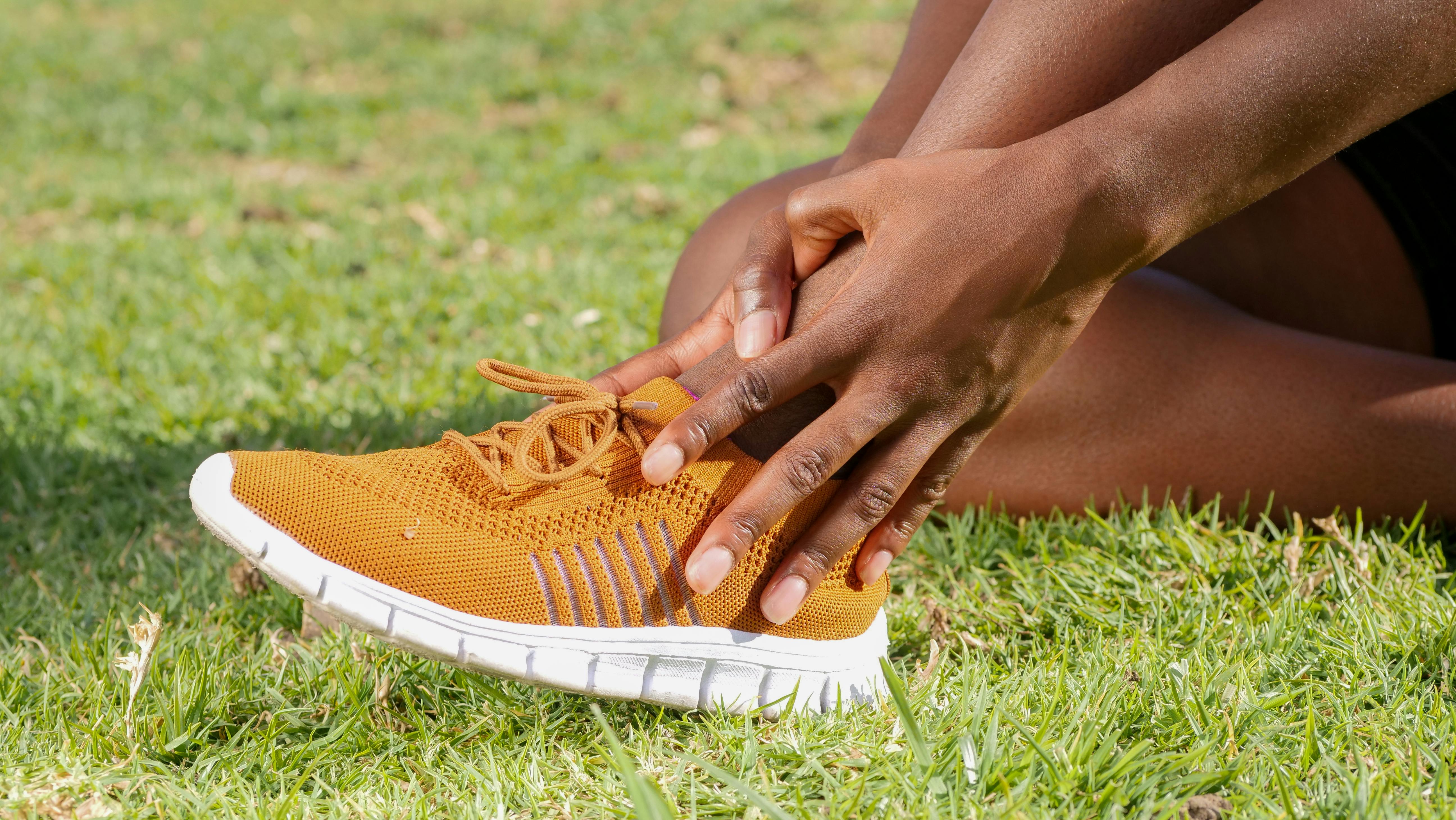
This small, simple exercise directly addresses one of the most common causes of tripping: poor toe clearance (the inability to lift the front of the foot high enough while stepping). The muscle responsible, the anterior tibialis (shin muscle), is essential for flexing your foot upward (dorsiflexion), which is your foot's action of getting ready for the next step. Start by sitting tall in a sturdy chair, feet flat on the floor. Keeping your heel planted, slowly lift just the front of your foot and toes off the ground as high as possible, imagining you’re pulling your foot up against a gentle resistance. Hold this lift for three seconds, feeling the work in your shin, then lower slowly. This drill strengthens the specific muscles that ensure your toes clear the floor safely when you walk, preventing the dreaded "foot-drag" that catches on rugs and uneven pavement. Make this a habit: strong shins mean smoother, safer walking.
41. Open-the-Gate/Close-the-Gate (Hip External/Internal Rotation)

Many falls and knee issues stem from poor hip mobility, particularly the ability to rotate the leg safely in and out. This move trains both internal and external hip rotation, which are vital for climbing stairs, pivoting while walking, and protecting the knee joint. Stand tall, holding onto a chair or wall for full support. Keeping your knee bent, slowly lift one foot slightly off the floor. Now, rotate that knee outward, away from your body ("open the gate"), pause, and then slowly rotate it inward, across your body ("close the gate"). The movement should originate entirely from the hip socket, keeping your pelvis level. This action loosens tight hip muscles and strengthens the small, deep rotators that stabilize your leg, directly reducing the stress placed on your knees and improving the confident, fluid movement of your entire leg.
42. Single-Leg Supported Lateral Step-Down

This exercise targets the eccentric strength of the gluteus medius (outer hip) and quadriceps, which is your body's "brake" when transferring weight or descending stairs. Stand sideways next to a sturdy step (3-5 inches high) while holding a support. Place the foot nearest the step firmly on the surface. Slowly and controlledly lower your opposite leg down until the heel barely taps the floor, taking 4–5 seconds for the lowering phase. Immediately push back up. This slow, weighted descent forces the standing hip stabilizers to work intensely, building the crucial lateral control needed to prevent the knee from caving inward during walking or single-leg tasks, thereby promoting joint health and stability.
43. The "Sit-to-Stand" Hover: Functional Thigh Mastery

This deceptively challenging move is the bridge between sitting and powerful, independent standing. Sit on the edge of a sturdy chair with your feet flat and hip-width apart. Lean forward slightly at the hips, keeping your chest up. Press firmly into your heels to lift your buttocks just an inch or two off the chair—but don't stand all the way up. Hold this hovering position for 3–5 seconds, feeling your thighs and core engage intensely, then slowly lower back down with control. This exercise eliminates momentum, forcing your quadriceps and glutes to generate pure strength from a deep range of motion. Mastering the "hover" builds the critical power needed to get out of cars, deep sofas, or low seats without needing to push off with your hands.
44. The Internal Hip Rotation Lift (Deep Hip Stabilizers)
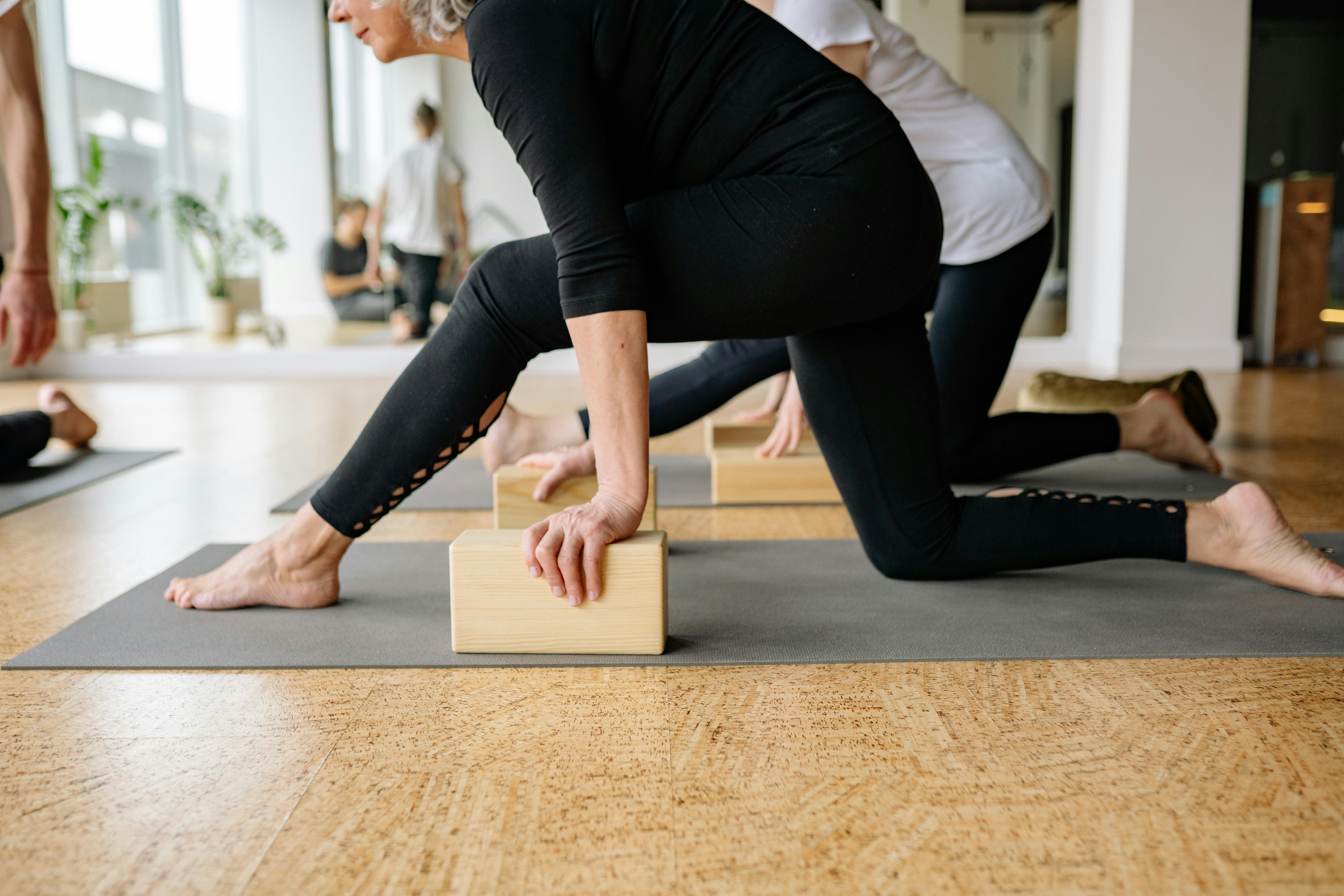
This subtle yet powerful move strengthens the deep internal rotators of the hip and the crucial ankle stabilizers needed for standing balance and quick turns. Stand tall, holding onto a chair or wall for full support. Slowly shift your weight onto your left leg. Keeping your left knee slightly bent, lift your right foot a few inches off the floor. Now, rotate your right leg inward so your foot moves across the center of your body, then back out. The key is to keep the movement small and controlled, using only the muscles deep inside your hip socket and around your standing ankle. This targeted rotation builds the neuromuscular control necessary for planting your foot and safely pivoting—like quickly turning to change direction—a major factor in preventing falls.
45. Eccentric Shoulder Blade Slides (The 'W' Drill): Protecting Your Rotator Cuff
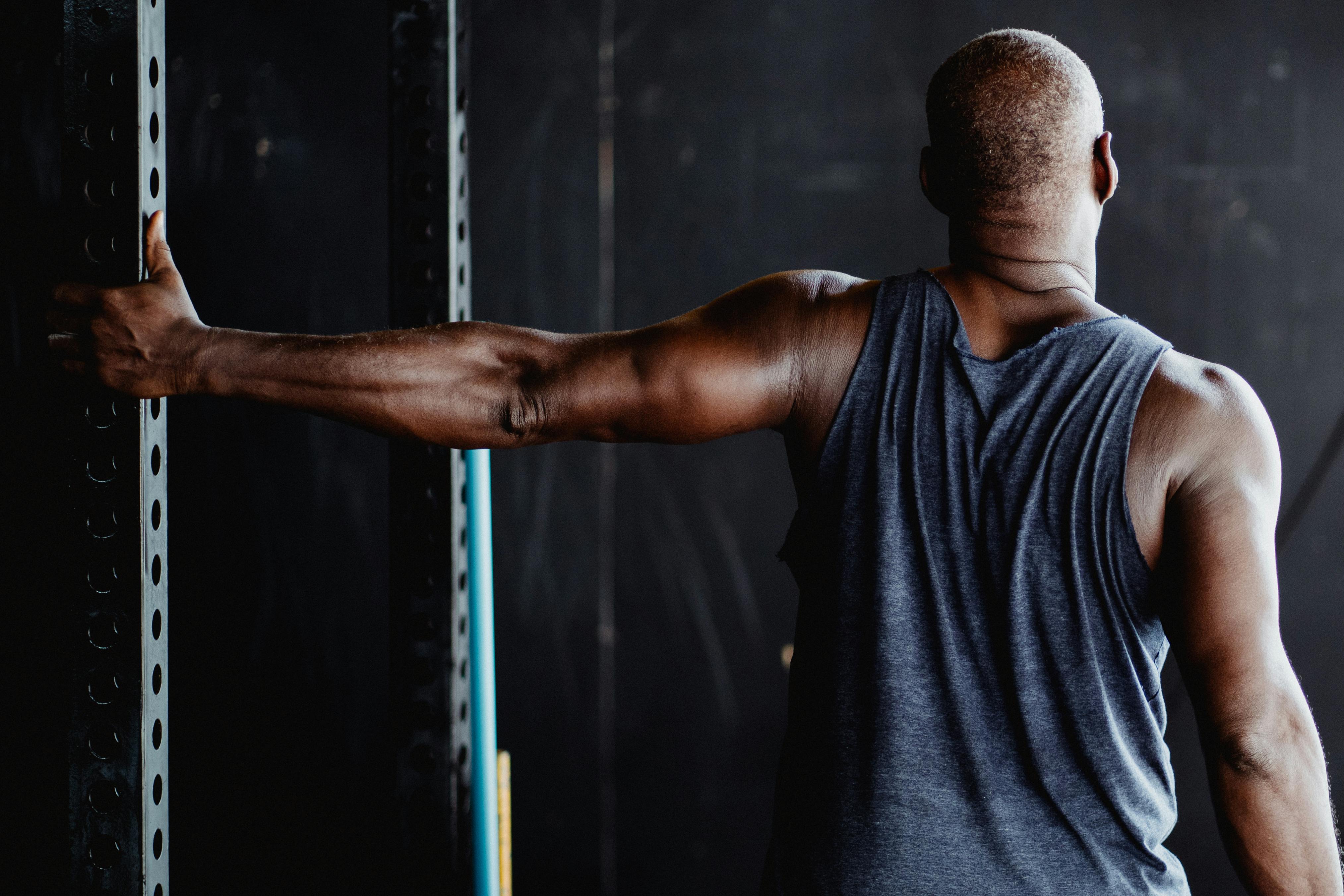
Shoulder pain often results from weakness in the muscles that control the shoulder blades, not the arms themselves. The Eccentric Shoulder Blade Slide specifically targets and strengthens these crucial back stabilizers, protecting the delicate rotator cuff. Stand facing a wall, a step away, with your back pressed flat against it (or sit tall). Raise your arms into a "W" shape: elbows bent, palms forward, forearms against the wall. Now, and this is the key, take five full seconds to slowly slide your arms upward, straightening them almost overhead, while ensuring your lower back remains pressed flat against the wall. Then, slowly return to the "W." This controlled, slow upward motion builds endurance in the upper back, improving posture and creating a stable platform, which is essential for safely lifting and carrying everyday objects without strain.
46. Single-Leg Balance with Visual Scanning (Cognitive-Motor Challenge)
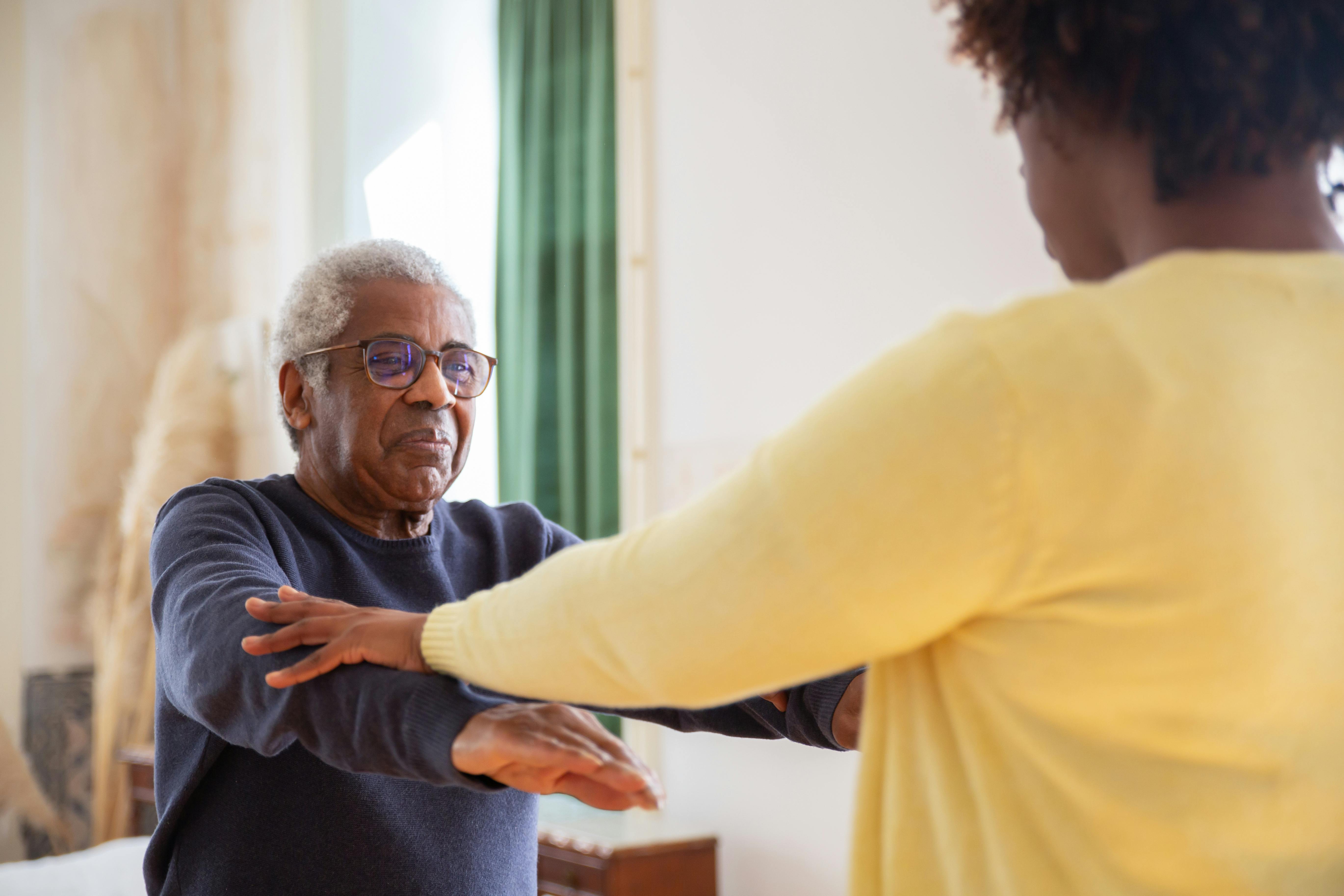
To challenge your proprioception and fall risk more effectively, combine balance with a head movement. Stand on one leg behind a counter for light support. While maintaining balance, slowly scan your eyes from left to right (or nod your head up and down) 5 times. Switch legs. This movement intentionally disrupts the vestibular system (inner ear), forcing your ankle and hip stabilizers to work harder without the stabilizing visual cue. This exercise builds crucial strength in the ankle and foot intrinsic muscles and improves the communication between your brain and body—the precise coordination needed to quickly recover from a trip or maintain steady footing while looking over your shoulder.
47. Supported Wall Slides (Eccentric Focus for Knee Health)
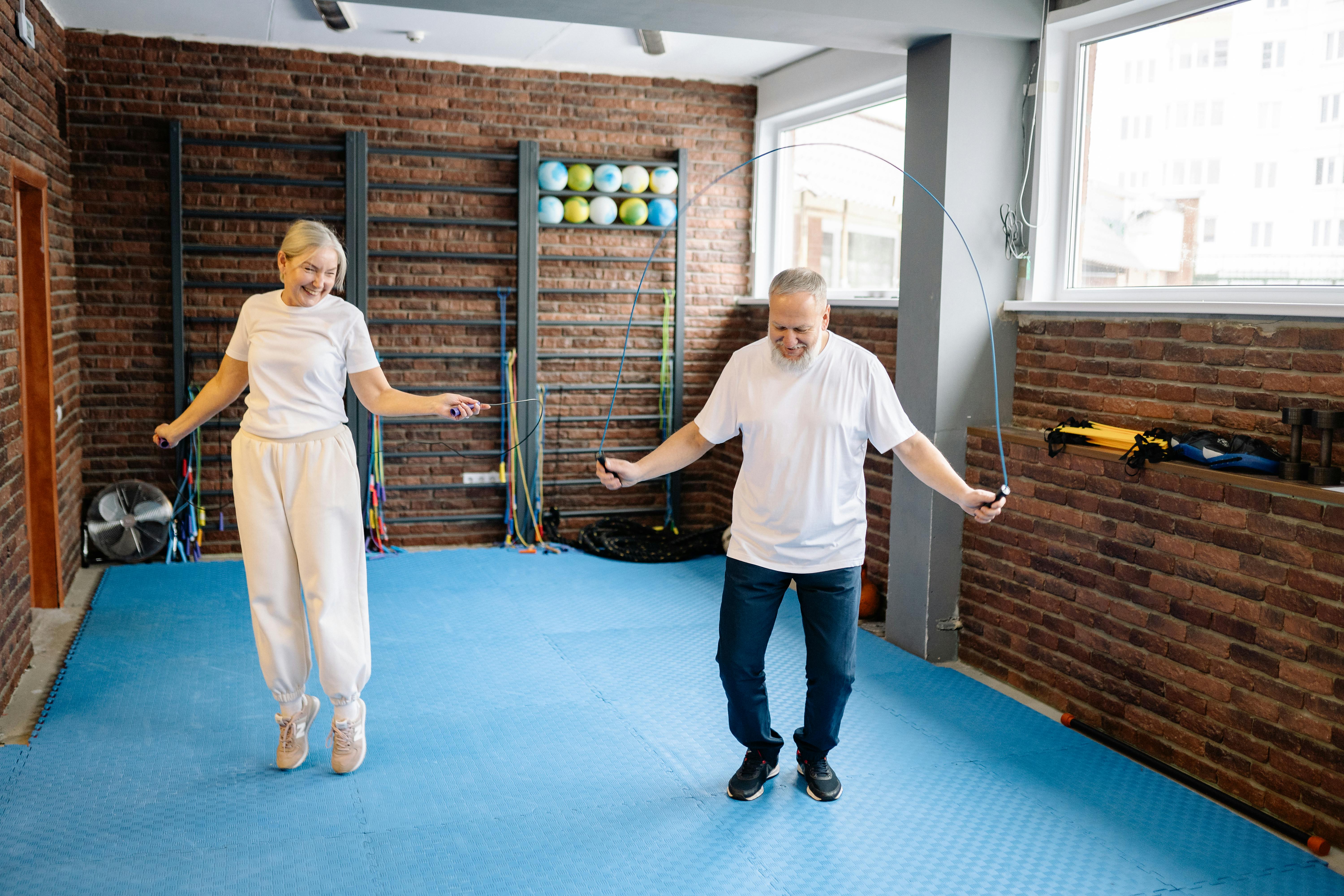
Supported Wall Slides are an excellent, joint-friendly way to build quadriceps strength and control, which is crucial for knee stability and safe stair descent. Stand with your back flat against a wall, feet shoulder-width apart, and about a foot away from the wall. Slowly and smoothly slide down the wall until your knees are bent to a shallow angle (e.g., 45 degrees, or less if needed). The focus here is the eccentric phase: take 3-5 seconds to slowly slide back up the wall, controlling the movement entirely with your thigh muscles. This intentional tempo builds the braking power necessary to manage transfers and prevent the "giving out" feeling in the knees.
48. Resistance Band Walks (Mini Band Lateral Movement)

Resistance Band Walks (also known as "monster walks" or "crab walks") powerfully target the often-neglected hip abductors and rotators (the gluteus medius and minimus) using a mini-loop band placed around the ankles or knees. Stand with knees slightly bent, keeping the band taut. Take 10–15 slow, deliberate steps laterally in one direction, then reverse. This move is crucial because it strengthens the lateral stabilizers of the hip, the muscles that keep your pelvis level when walking and prevent the knee from caving inward. Strengthening these stabilizers directly improves gait quality and significantly reduces the risk of lateral falls or stumbles on uneven ground.
49. Weighted Wrist Rolls (Forearm and Grip Endurance)
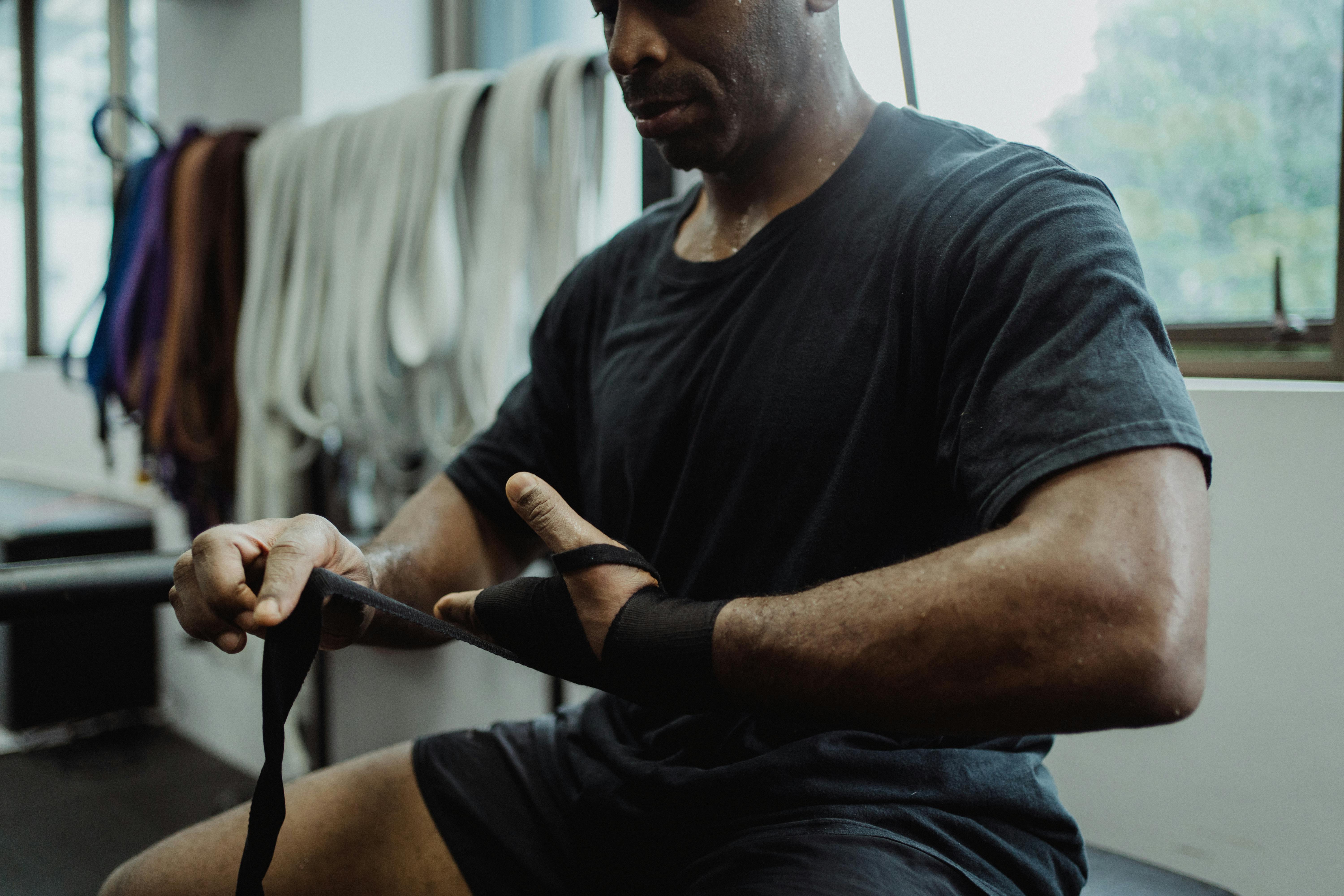
Grip strength is one of the most reliable biomarkers of longevity and overall muscular strength, but it’s often overlooked in standard routines. Weighted wrist rolls specifically target the forearm flexors and extensors—muscles essential for holding utensils, opening jars, carrying objects, and performing nearly every upper-body exercise safely. Sit or stand holding a light dumbbell (1–3 lbs) or a soup can, with your forearm resting on your thigh or a table (palm facing up). Slowly curl the weight up toward the ceiling using only your wrist, then slowly reverse the motion using the opposite side of your forearm. Perform 15 repetitions on both sides, then flip your palm down and repeat. Strengthening these wrist and grip muscles directly improves manual dexterity and reduces hand fatigue, helping you maintain the functional grip crucial for independence.
50. The "Wall Angel" (Shoulder Mobility and Spinal Alignment)
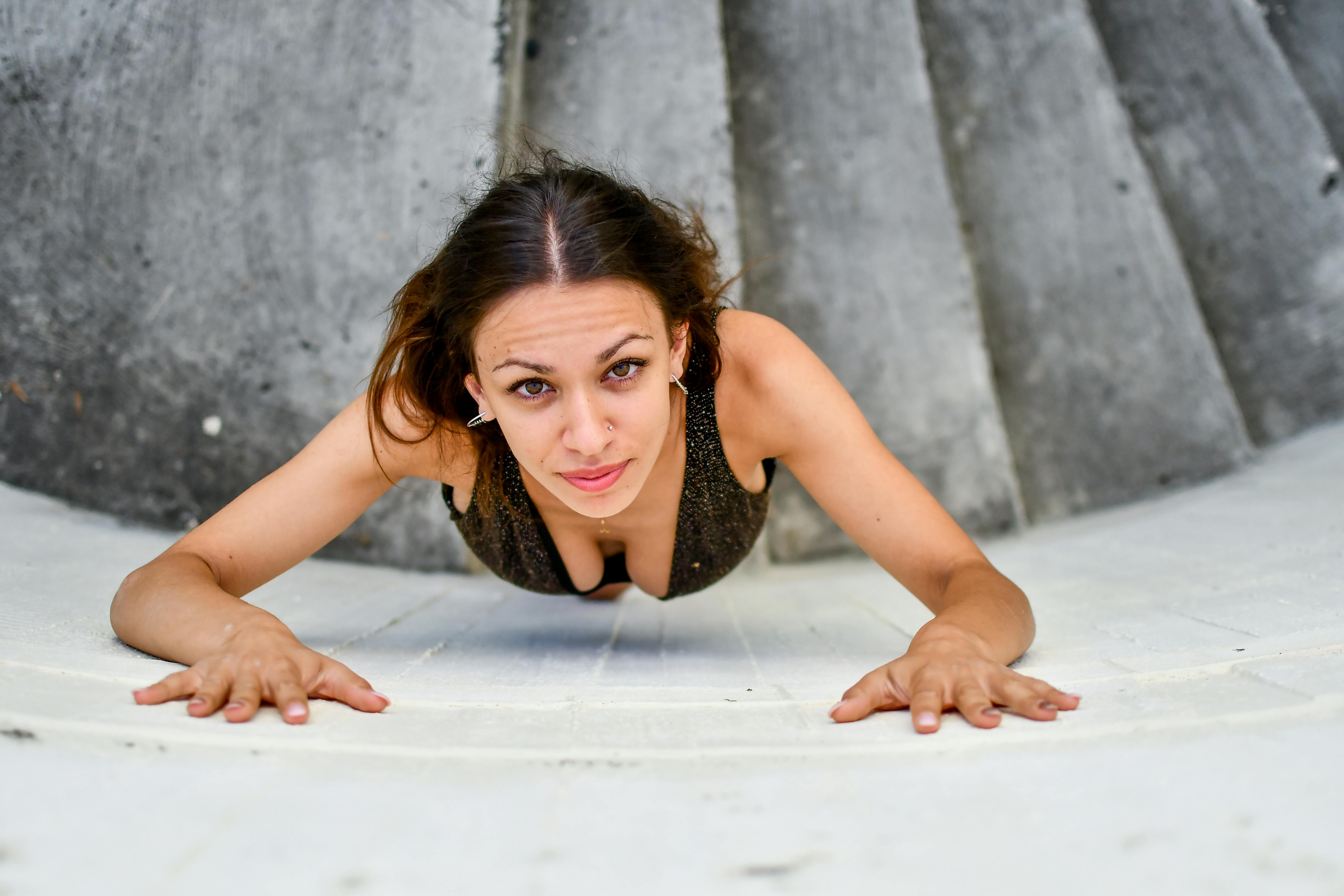
The "Wall Angel" is a deceptively powerful exercise that targets the postural muscles of the upper back while improving shoulder mobility—critical for reaching high shelves or simply standing tall. Stand with your back flat against a wall, feet a few inches forward to ensure your lower back and head make contact. Raise your arms to a "W" shape, pressing your elbows and the backs of your hands against the wall. Slowly slide your hands upward toward the ceiling, aiming to keep your arms in contact with the wall at all times. Stop before your back arches or your hands lift away, then slowly return to the "W" position. This move counteracts the "forward slouch" by strengthening the middle and lower trapezius while stretching the chest. By restoring this upright alignment, you reduce the strain on your neck and ensure your shoulders have a stable, healthy base for all everyday lifting tasks.
51. The "Pillow Squeeze" (Adductor Strength and Knee Stability)
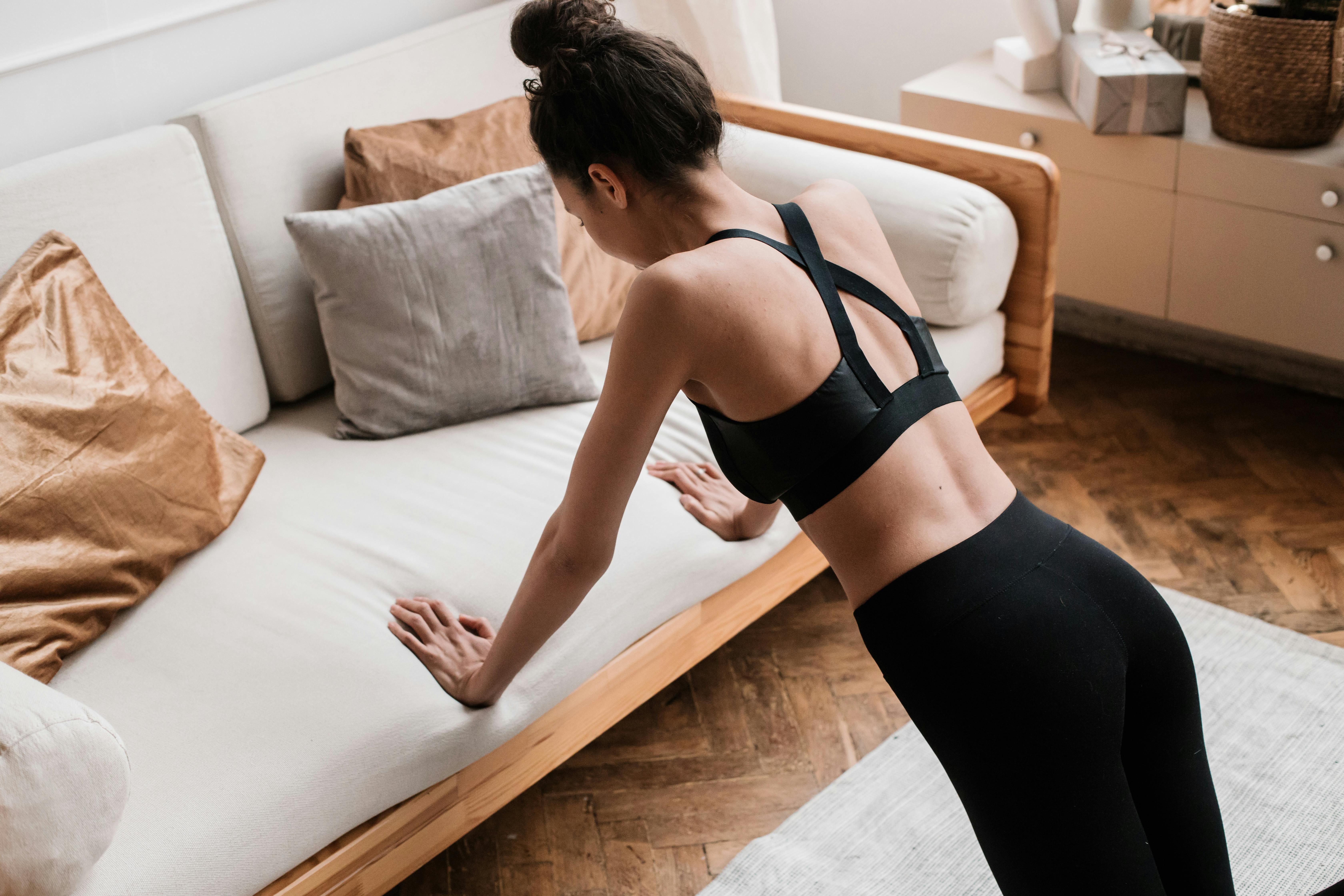
The Pillow Squeeze is a gentle yet highly effective isometric exercise that targets the inner thighs (adductors), which are often neglected in standard walking routines. Strengthening these muscles is essential for maintaining proper knee alignment and pelvic stability, helping to prevent the "caving in" of knees that can lead to joint pain. To perform this, sit tall on a sturdy chair with your feet flat on the floor. Place a firm pillow or a folded towel between your knees and squeeze it as hard as is comfortable, holding the contraction for 5 to 10 seconds. Relax briefly and repeat 10 times. This zero-impact move builds the internal support system for your legs, making it easier to maintain a steady, confident gait and providing the structural integrity needed for safely getting in and out of cars or bed.
Embrace Your Strength: Moving Forward With Confidence

Each moment you dedicate to these movements is an act of self-kindness; they’re not chores or obligations, but gifts to your future self. Progress may come slowly, but consistency is what truly defines success. Know that you’re building not just muscle, but a brighter, easier path for the days and adventures ahead. By honoring the needs of your changing body, supporting one another, and cheering for each effort, you’re proving that healthy aging is a daily practice—rooted in community, self-care, and the simple joy of moving forward, together.
